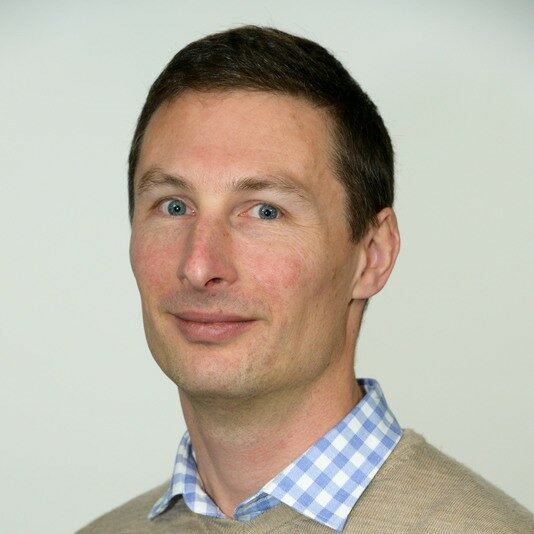
Current AAPP Activities:
Dr Alexander is working closely with other members of Project 1 to analyse the recent Southern Ocean field campaign datasets of clouds, aerosols, precipitation and radiation. These results will inform future model simulations with the goal of reducing the surface radiation bias presently found in many climate models. His focus is on quantifying occurrence of super-cooled liquid water clouds and precipitation phase within high-latitude cyclone systems; and is currently constructing a seasonal climatology of clouds from Macquarie Island.
Current AAPP Activities:
Dr Alexander is working closely with other members of Project 1 to analyse the recent Southern Ocean field campaign datasets of clouds, aerosols, precipitation and radiation. These results will inform future model simulations with the goal of reducing the surface radiation bias presently found in many climate models. His focus is on quantifying occurrence of super-cooled liquid water clouds and precipitation phase within high-latitude cyclone systems; and is currently constructing a seasonal climatology of clouds from Macquarie Island.
Biography
Dr Simon Alexander is a Senior Research Scientist at the Australian Antarctic Division. His research interests include Southern Ocean and Antarctic clouds, precipitation and aerosols. Clouds remain one of the key sources of uncertainty for estimating global climate sensitivity. Many climate models have a large surface radiative bias over the Southern Ocean, which is traced back to uncertainties in our understanding of clouds. The clouds and aerosols present over the Southern Ocean are different from those in other regions of the world, due to the pristine nature of the air and minimal anthropogenic aerosol influences. He also has research interests in polar ozone and polar stratospheric clouds, and has contributed as co-author or contributing author to the quadrennial WMO ozone assessment reports since 2014.
Dr Alexander was a leading investigator on recent major international Southern Ocean field campaigns designed to measure properties of clouds and aerosols from air, sea and land. He is currently working with collaborators to analyse these data and use them to improve atmospheric model simulations. More recently, he has contributed to the Year of Polar Predictability (YOPP) Southern Hemisphere winter campaign, with co-ordination of a range of ground-based measurements made from Davis.
Scientific Committee Memberships
| SCAR Aerosols and Climate Action Group |
| International Committee on Polar Meteorology (ICPM) |
| Australian Ozone Science Group |
Selected Publications
Associated links
https://www.antarctica.gov.au/science/meet-our-scientists/dr-simon-alexander-atmospheric-scientist/
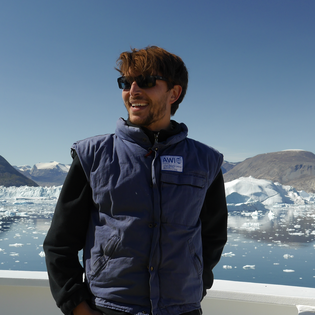
About Lennart & AAPP Involvement:
Lennart Bach is an ARC Future Fellow for Climate Intervention at the Institute of Marine and Antarctic Studies. He is interested in marine plankton communities, the carbon cycle, and ocean-based solutions for the climate crisis.
About Lennart & AAPP Involvement:
Lennart Bach is an ARC Future Fellow for Climate Intervention at the Institute of Marine and Antarctic Studies. He is interested in marine plankton communities, the carbon cycle, and ocean-based solutions for the climate crisis.
Biography

SOPHIE BESTLEY
Quantitative marine scientist
Co-leader, Project 7: Krill and ecosystems
Social Links
About Sophie & AAPP Involvement:
Dr Sophie Bestley is a Senior Lecturer in Quantitative Southern Ocean Ecology in the Ecology and Biodiversity Centre at the Institute for Marine and Antarctic Studies (IMAS). She contributes to the Australian Antarctic Program Partnership through multidisciplinary research interfacing biological oceanography, ecology, and quantitative methods. A key focus is on understanding the biophysical processes which drive the productive East Antarctic marine ecosystems upon which highly mobile predators – seals, whales, and penguins – depend. She uses animal-borne telemetry to gain novel insights into Antarctic and Southern Ocean systems and has participated in three polar research voyages. This research contributes primarily to Theme 3 “The future of sea-ice krill and ecosystems”, Project 7 “Krill and Ecosystems”, as well as to Theme 2 “Nature and impacts of Southern Ocean change”, Project 4 “Oceanography”.
About Sophie & AAPP Involvement:
Dr Sophie Bestley is an ARC DECRA fellow at the Institute for Marine and Antarctic Studies (IMAS). She predominantly works on highly mobile marine species, using animal-borne telemetry, with a present focus in the Antarctic and Southern Ocean. Her research interests interface ecology, biological oceanography and quantitative methods.
Biography
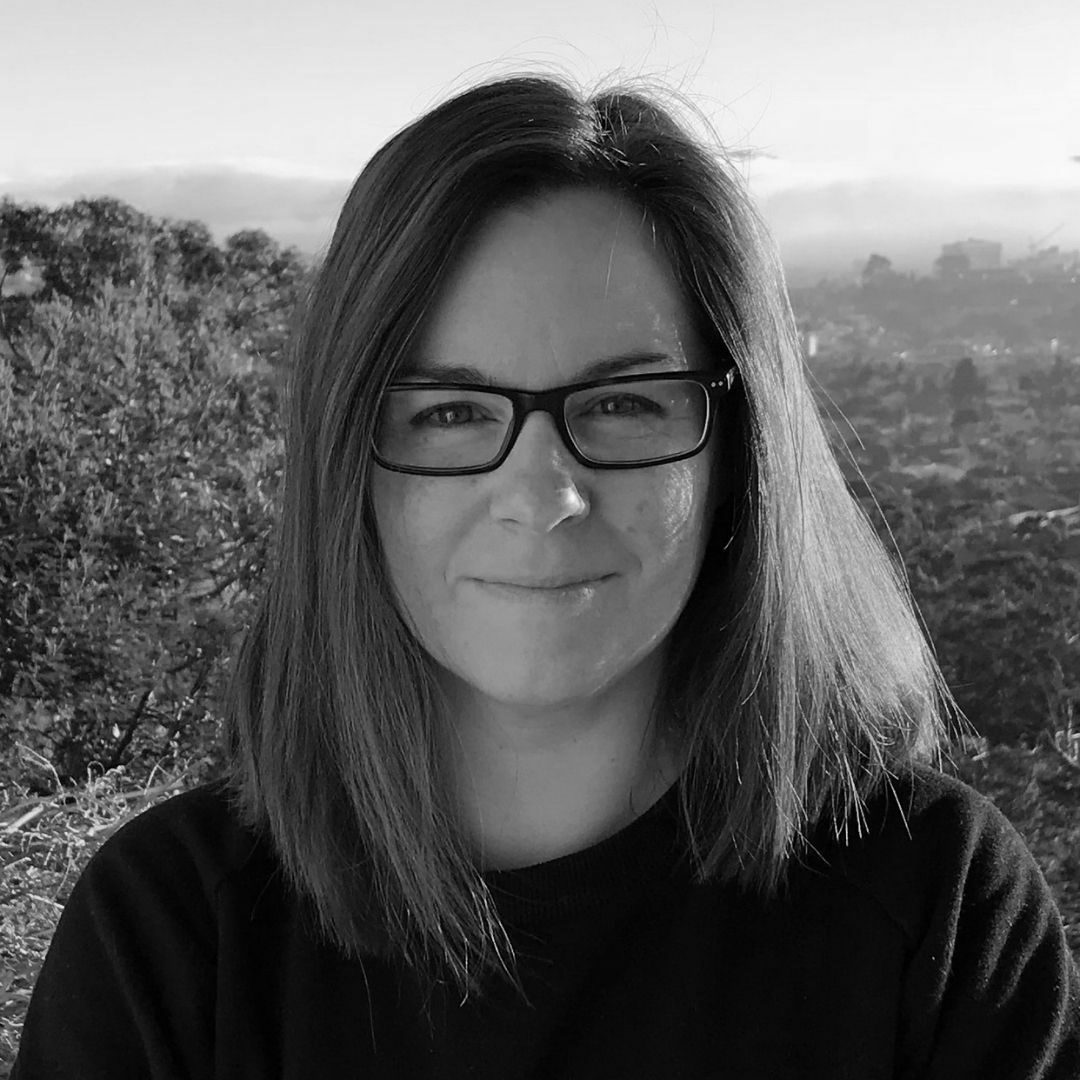
About Julia & AAPP Involvement:
Julia is a Professor in Ecology & Fisheries at the Institute for Marine and Antarctic Studies. She is interested in the field of global change ecology, biodiversity and ecosystems, and food security. Julia's research seeks to understand and predict how marine ecosystems respond to human-induced and environmental change.
About Julia & AAPP Involvement:
Julia is a Professor in Ecology & Fisheries at the Institute for Marine and Antarctic Studies. She is interested in the field of global change ecology, biodiversity and ecosystems, and food security. Julia's research seeks to understand and predict how marine ecosystems respond to human-induced and environmental change.

ANDREW BOWIE
Marine Biogeochemist
Co-leader Project 5: Biogeochemistry
About Andy & AAPP Involvement:
Professor Andrew Bowie is a Chemical Oceanographer. His research investigates the biogeochemistry of trace elements in Southern Ocean and Antarctic sea ice environments, with projects addressing key research questions related to atmospheric dust deposition and solubilities, ocean iron fertilisation, physico-chemical speciation of trace elements and their isotopes, and the role of ocean dynamics on chemical and biological marine processes. His research outcomes are focused on assessment of trace element control of ocean productivity, ocean carbon sequestration and expanding our knowledge of marine geochemical processes. His research is supported by the Australian Antarctic Program Partnership (AAPP), the Australian Research Council (ARC), and several national and international collaborative grants.
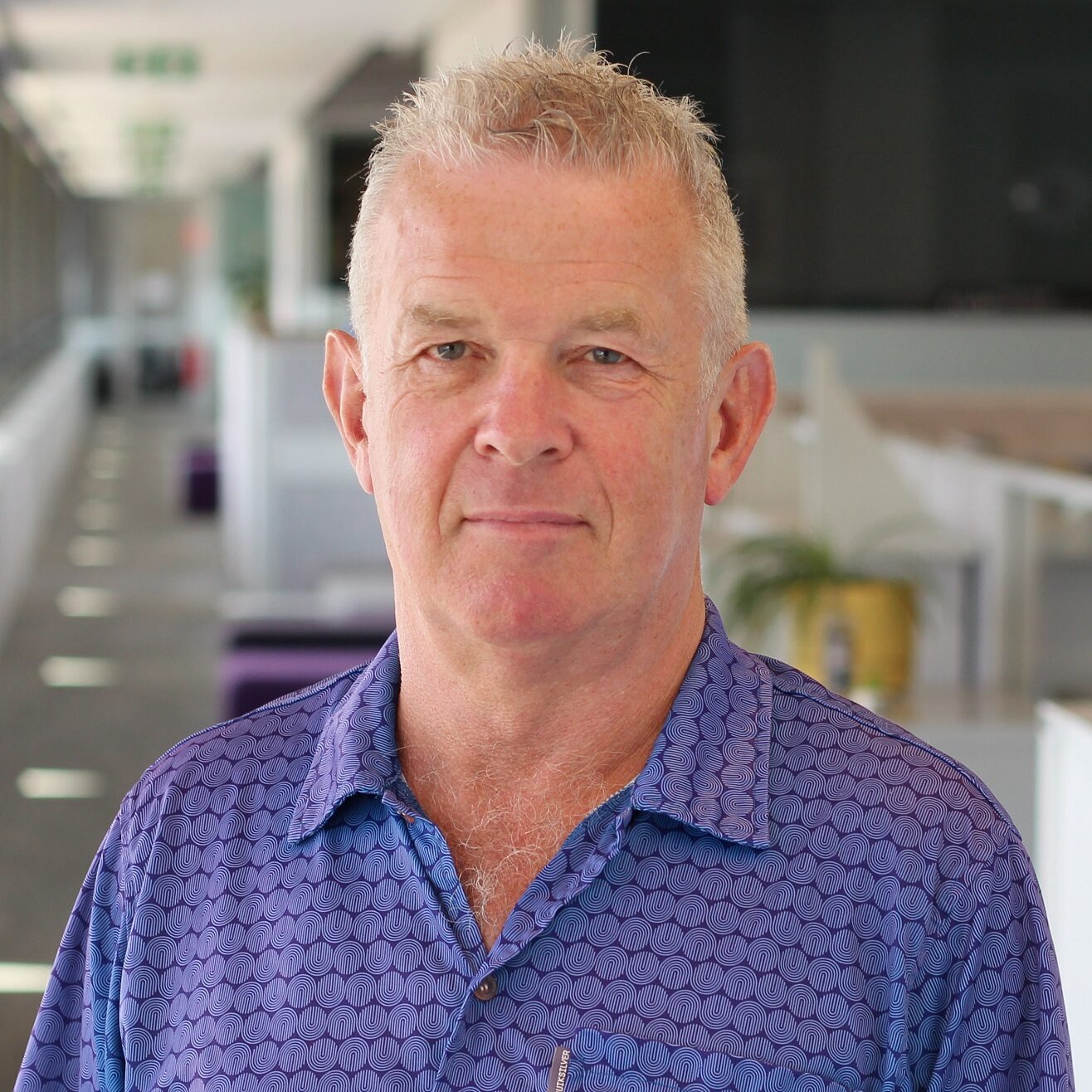
About Phil & AAPP Involvement:
Philip Boyd is Professor of Marine Biogeochemistry at the Institute of Marine and Antarctic Studies at the University of Tasmania. Philip's in-depth research interests range from ecology to biogeochemistry and include the joint development of decision support tools (such as for climate change, geoengineering) with economists and policy analysts.

RICHARD COLEMAN
Oceanographer and glaciologist
Emeritus Professor, IMAS
E: Richard.Coleman@utas.edu.au
About Richard & AAPP Involvement:
Professor Coleman's research covers the areas of geodesy, physical oceanography and glaciology, focusing on understanding the role of the oceans and cryosphere in the global climate system using observations, theory and modelling, with more than 120 publications in peer-reviewed journals. He has wide experience in graduate supervision, with some 43 completions (6 Masters and 37 PhD).
In AAPP, his research focus is on understanding the interaction of ice shelves with the ocean and atmosphere, and the dynamics (calving, fracturing, evolution) of ice shelves and their flow from ice sheets, using past geodetic (GPS, Doppler), geophysical (seismic, ApRES) and relevant ocean data to investigate the dynamics and vulnerability of East Antarctic ice shelves and ice sheet region.
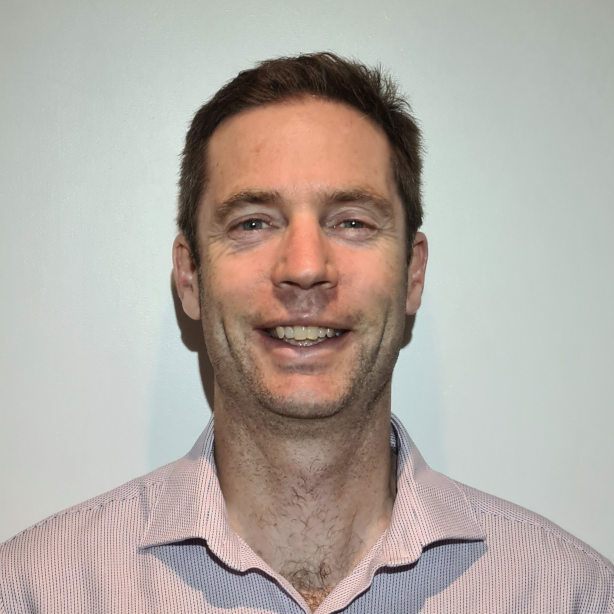
Current AAPP Activities:
Stuart is a climate and ecosystem modeller whose research focuses on understanding the likely impacts of climate change on the Southern Ocean and how changes in the physical environment are likely to cause changes to the marine ecosystem of the region. He is particularly interested in understanding the relationship between the environment and population success of Antarctic krill.
Current AAPP Activities:
Stuart is a climate and ecosystem modeller whose research focuses on understanding the likely impacts of climate change on the Southern Ocean and how changes in the physical environment are likely to cause changes to the marine ecosystem of the region. He is particularly interested in understanding the relationship between the environment and population success of Antarctic krill.
Biography
Stuart is a Senior Lecturer and Associate Head of Learning and Teaching at the Institute for Marine and Antarctic Studies and the chair of the IMAS Learning and Teaching committee. In this position he leads the delivery of both undergraduate and postgraduate teaching within IMAS, ensuring we provide world class learning opportunities for our students.
Stuart is a climate and ecosystem modeller who specialises in understanding how the physical environment influences individual and population success of Southern Ocean marine species. His particular interest is in how changes in the physical climate are likely to change population dynamics in this important ecosystem. Working in a multidisciplinary field necessarily involves collaboration and Stuart has built a diverse group of collaborators with a range of specialisations from ocean modellers through to ecologists and field biologists. Before joining the IMAS faculty, Stuart was a long-time member of the Antarctic Climate and Ecosystem Co-operative Research Centre.

About Mark & AAPP Involvement:
Mark participates in ice core climate research over thousand and million-year timescales, such as from Law Dome and Little Dome C. He has worked at AAD in ice cores since 1996 (H-index 37, 107 publications). His research interests include using trace ion chemicals in ice cores to produce paleoclimate records, contributing to 2k and Million-Year-Ice-Core (MYIC) science. Mark facilitates support for Joel Pedro (MYIC science leader), Lenneke Jong (EAIIST, MYIC physical properties), Daniel Baggenstos (MYIC gas), Andrew Moy (EASI, MYIC isotopes) and Jason Roberts (ICECAP, MYIC site selection and dating).
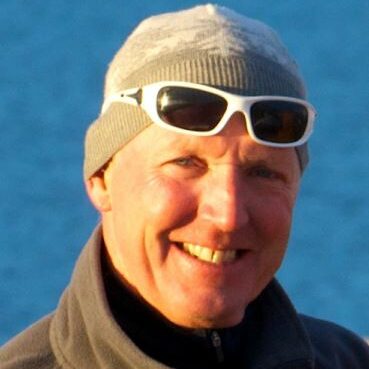
DAVID ETHERIDGE
Atmospheric scientist
Co-leader Project 2: Ice cores
About David & AAPP Involvement:
David Etheridge is a principal research scientist with the Climate Science Centre, CSIRO Oceans and Atmosphere. His research involves the measurements and modelling of long term changes in greenhouse gases and ozone-depleting compounds. It is used in the IPCC Assessment Reports on The Science of Climate Change, the World Meteorological Organisation (WMO) Scientific Assessments of Ozone Depletion and the CSIRO/BoM State of the Climate reports, and he is a contributing author of these reports. He leads field programs on the polar ice sheets, researching atmospheric composition change, climate change, and ice sheet dynamics. He is also investigating the potential impact on the atmosphere of energy technologies, such as geological storage of CO2, unconventional gas and hydrogen.

About John & AAPP Involvement:
John is an experimental atmospheric physicist at the Australian Antarctic Division with interests in measurement of long-term trends and variability in the polar atmosphere, projects on cloud, radiation and precipitation and sea level trends through the tide gauge monitoring network. AAPP involvement is through Theme 1 – Antarctica’s influence on climate and sea level – Project 1 Atmospheres.
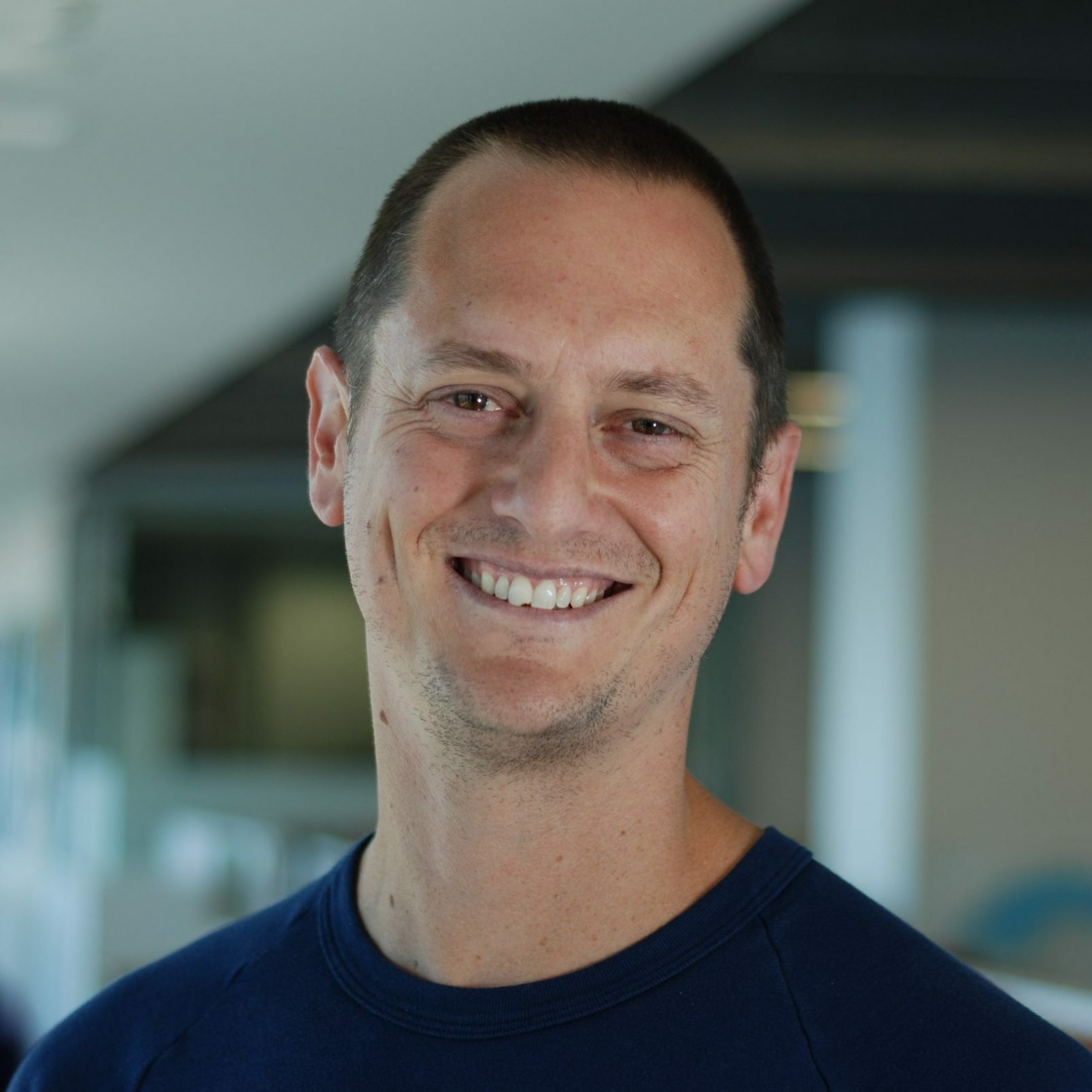
Current AAPP Activities:
Dr Ben Galton-Fenzi is a senior scientist with the Australian Antarctic Division, leading a team of researchers focused on understanding how and why the Antarctic ice sheet will respond to climate change. His PhD in oceanography focused on understanding the mechanisms controlling the dynamic interaction between the ice sheets and the oceans.
He has worked in several remote, deep field locations, including Law Dome, the Amery Ice shelf and most recently the Totten Glacier (leading field seasons since 2016). The Totten is one of the largest glaciers in Antarctica and thought to be susceptible to rapid retreat due to a warming climate, and one of the main potential contributors to global sea level rise. His focus is on integrating observations, theory and models. Dr Galton-Fenzi is AAPP co-theme leader of research into Antarctica's influence on climate and sea level.

About Laura & AAPP Involvement:
Laura Herraiz-Borreguero is a Research Scientist at CSIRO and a member of the Southern Ocean observations and change project team at the Centre for Southern Hemisphere Oceans Research. Dr Herraiz-Borreguero received her PhD in physical oceanography in 2010 from the University of Tasmania. Before joining CSIRO in June 2018, Dr Herraiz-Borreguero was a Marie Curie Research Fellow at the University of Southampton, UK. During this time, her research evolved from open ocean/large scale physical processes in the ocean to polar oceanography and Ice shelf-ocean interactions. From 2014 to 2016, Dr Herraiz-Borreguero worked as a postdoctoral researcher at the Centre for Ice and Climate in Copenhagen, Denmark and from 2010 to 2013, she was a Postdoctoral Research Fellow at the Antarctic Climate and Ecosystems CRC in Hobart, Tasmania. She led several papers on the coupling of the ocean with the Amery Ice Shelf, East Antarctica. This work used a unique set of observations from boreholes drilled through the ice shelf by the Australian Antarctic Division’s AMISOR project.
Laura provides feedback on field campaigns and contributes to AAPP Themes 1 and 2. She works on Southern Ocean change using observations, and on the interaction of the ocean with ice shelves around Antarctica.
About Laura & AAPP Involvement:
Laura Herraiz-Borreguero is a Research Scientist at CSIRO and a member of the Southern Ocean observations and change project team at the Centre for Southern Hemisphere Oceans Research. Dr Herraiz-Borreguero received her PhD in physical oceanography in 2010 from the University of Tasmania. Before joining CSIRO in June 2018, Dr Herraiz-Borreguero was a Marie Curie Research Fellow at the University of Southampton, UK. During this time, her research evolved from open ocean/large scale physical processes in the ocean to polar oceanography and Ice shelf-ocean interactions. From 2014 to 2016, Dr Herraiz-Borreguero worked as a postdoctoral researcher at the Centre for Ice and Climate in Copenhagen, Denmark and from 2010 to 2013, she was a Postdoctoral Research Fellow at the Antarctic Climate and Ecosystems CRC in Hobart, Tasmania. She led several papers on the coupling of the ocean with the Amery Ice Shelf, East Antarctica. This work used a unique set of observations from boreholes drilled through the ice shelf by the Australian Antarctic Division’s AMISOR project.
Laura provides feedback on field campaigns and contributes to AAPP Themes 1 and 2. She works on Southern Ocean change using observations, and on the interaction of the ocean with ice shelves around Antarctica.
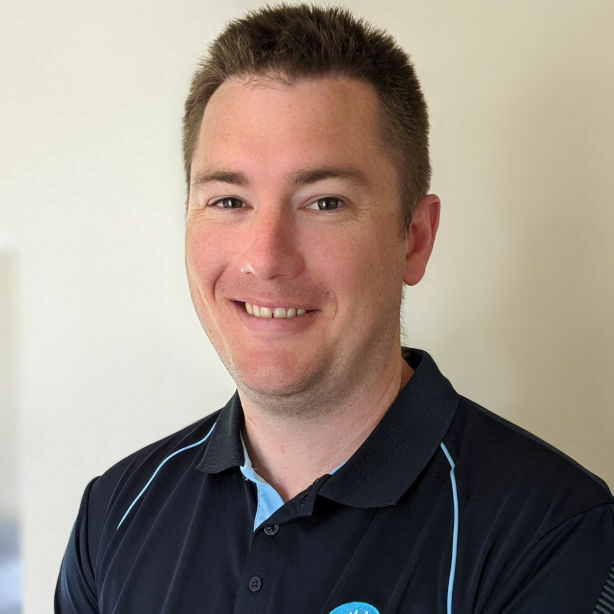
About Ruhi & AAPP Involvement:
Ruhi's work within AAPP revolves around increasing our understanding of atmospheric aerosols in the Southern Ocean and Antarctica. This is done using ongoing measurements from the RV Investigator and Cape Grim as well as a range of intensive field campaigns at Antarctic research stations and aboard various ship-based platforms. The goal is to close the gap in our understanding of the sources, sinks, chemistry and physics of aerosols in the region, which has been driven primarily by the dearth of measurements in the past. Because aerosols are key to the radiative balance, as well as cloud formation and properties, Ruhi collaborates closely with cloud researchers at AAD and the BoM.
About Ruhi & AAPP Involvement:
Ruhi's work within AAPP revolves around increasing our understanding of atmospheric aerosols in the Southern Ocean and Antarctica. This is done using ongoing measurements from the RV Investigator and Cape Grim as well as a range of intensive field campaigns at Antarctic research stations and aboard various ship-based platforms. The goal is to close the gap in our understanding of the sources, sinks, chemistry and physics of aerosols in the region, which has been driven primarily by the dearth of measurements in the past. Because aerosols are key to the radiative balance, as well as cloud formation and properties, Ruhi collaborates closely with cloud researchers at AAD and the BoM.

About So & AAPP Involvement:
So is a Principal Research Scientist at the Australian Antarctic Division and lead the krill research. His research focuses on various aspects of Antarctic krill biology and ecology including studies into climate change impacts on krill. So's involvement in AAPP is through Project 7 (Krill and Ecosystems) as a krill ecologist.
About So & AAPP Involvement:
So is a Principal Research Scientist at the Australian Antarctic Division and lead the krill research. His research focuses on various aspects of Antarctic krill biology and ecology including studies into climate change impacts on krill. So's involvement in AAPP is through Project 7 (Krill and Ecosystems) as a krill ecologist.
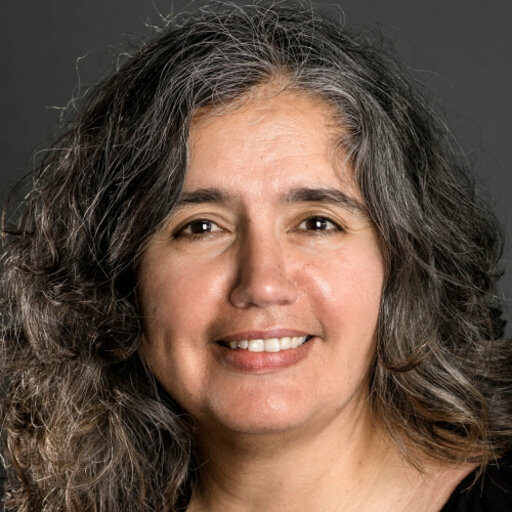
MELITA KEYWOOD
Atmospheric chemist
AAPP Management Committee
About Melita & AAPP Involvement:
Melita’s research expertise lies in the chemical and microphysical properties of atmospheric aerosol which she uses in a variety of applications ranging from tracking long term changes in aerosol microphysics and chemical composition of the remote marine boundary layer, to understanding aerosol growth and secondary organic aerosol in urban airsheds and biomass burning plumes.
Besides the role of co-Theme Leader for Theme 1, Melita will also contribute to the research being carried out in Project 1 (Atmospheres), with a focus on interpreting aerosol data sets collected during several voyages in the Southern Ocean since 2015.
About Melita & AAPP Involvement:
Melita’s research expertise lies in the chemical and microphysical properties of atmospheric aerosol which she uses in a variety of applications ranging from tracking long term changes in aerosol microphysics and chemical composition of the remote marine boundary layer, to understanding aerosol growth and secondary organic aerosol in urban airsheds and biomass burning plumes.
Besides the role of co-Theme Leader for Theme 1, Melita will also contribute to the research being carried out in Project 1 (Atmospheres), with a focus on interpreting aerosol data sets collected during several voyages in the Southern Ocean since 2015.

MATT KING
Polar geodesist
Director, Australian Centre for Excellence in Antarctic Science (ACEAS)
About Matt & AAPP Involvement:
Professor Matt King's field of expertise is observation of the global water cycle, including ice sheet mass balance and sea level change, and the deformation of the solid Earth caused by these changes in surface loading. I make particular use of data from the Global Positioning System (GPS) and the Gravity Recovery and Climate Experiment (GRACE). He also works on reducing systematic and random errors in these techniques in order to maximise the information content in the data and improve the reliability of the interpretations.
About Matt & AAPP Involvement:
Professor Matt King's field of expertise is observation of the global water cycle, including ice sheet mass balance and sea level change, and the deformation of the solid Earth caused by these changes in surface loading. I make particular use of data from the Global Positioning System (GPS) and the Gravity Recovery and Climate Experiment (GRACE). I also work on reduction of systematic and random errors in these techniques in order to maximise the information content in the data and improve the reliability of the interpretations.
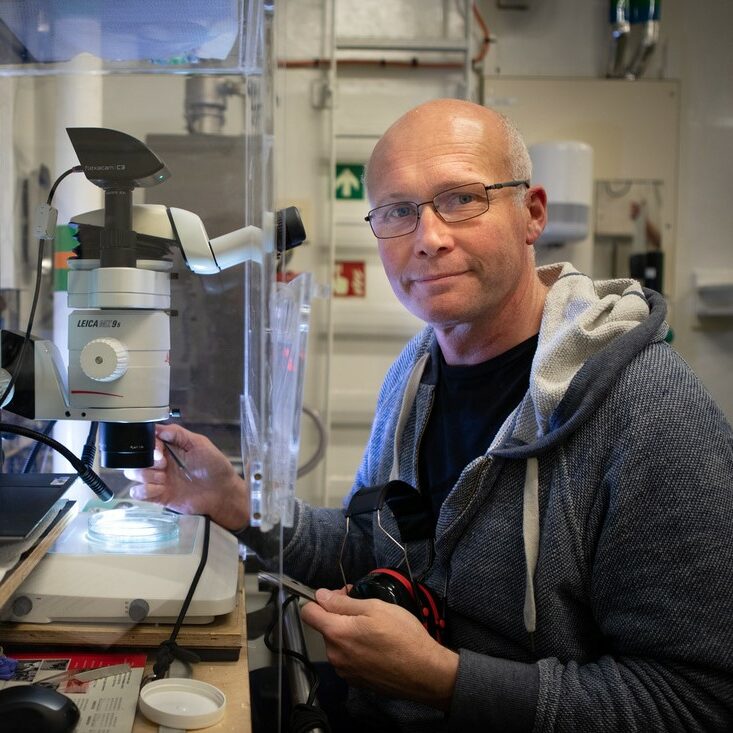
About Rob & AAPP Involvement:
Rob is a Marine Research Facility Specialist at the Australian Antarctic Division working primarily in the krill research program. His research focuses on various aspects of Antarctic krill biology and ecology including studies into climate change impacts on krill. Rob's involvement in AAPP is through Project 7 (Krill and Ecosystems) as a krill biologist.
About Rob & AAPP Involvement:
Rob is a Marine Research Facility Specialist at the Australian Antarctic Division working primarily in the krill research program. His research focuses on various aspects of Antarctic krill biology and ecology including studies into climate change impacts on krill. Rob's involvement in AAPP is through Project 7 (Krill and Ecosystems) as a krill biologist.
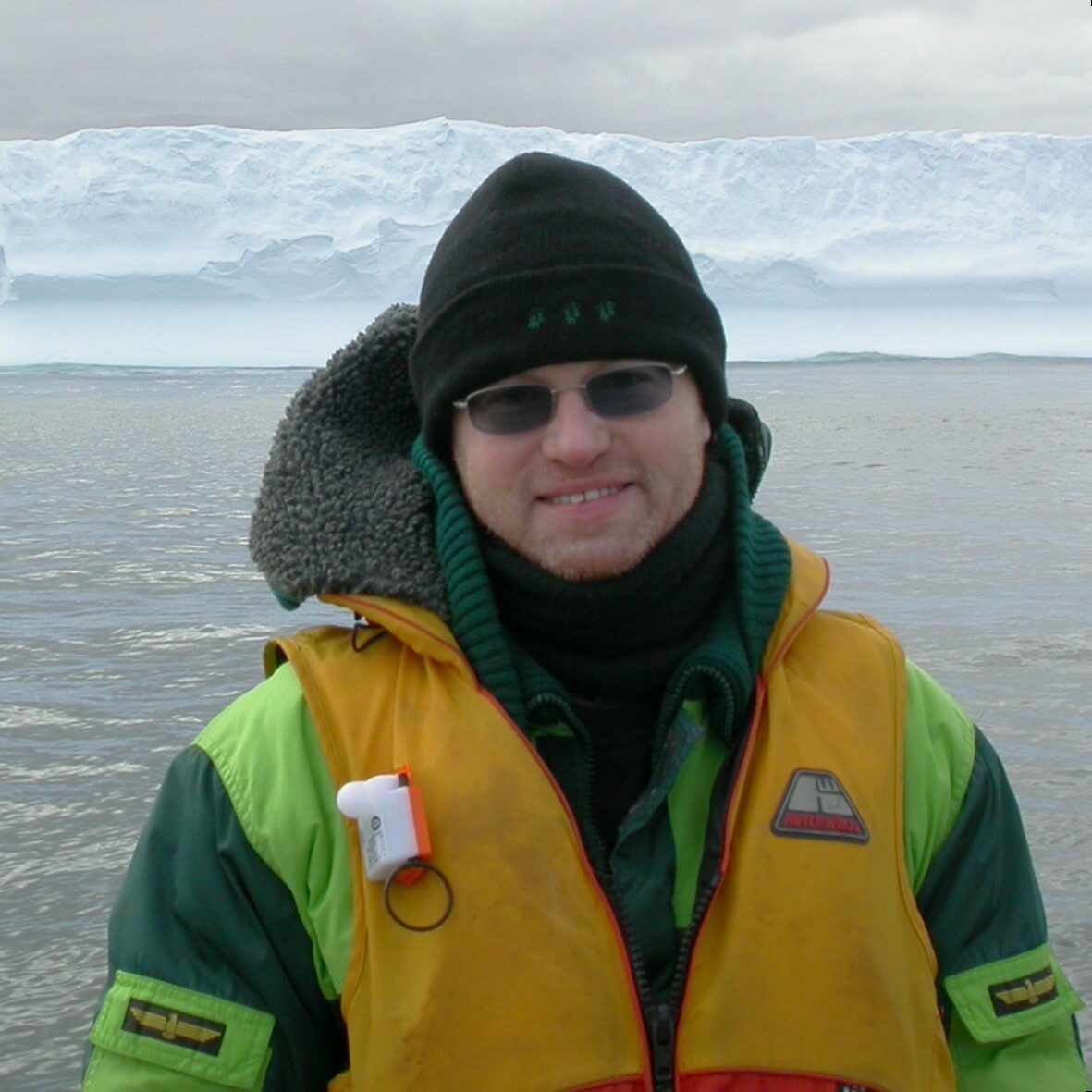
Current AAPP Activities:
John's involvement within the AAPP is through Theme 3 “The future of sea-ice krill and ecosystems”, Project 7 “Krill and Ecosystems” as a zooplankton taxonomist, looking at samples from the Continuous Plankton Recorder and other sources.
Current AAPP Activities:
John's involvement within the AAPP is through Theme 3 “The future of sea-ice krill and ecosystems”, Project 7 “Krill and Ecosystems” as a zooplankton taxonomist, looking at samples from the Continuous Plankton Recorder and other sources.
Biography
I am a zooplankton taxonomist at the Australian Antarctic Division (AAD) within the Plankton Ecology & Monitoring group, part of the Southern Ocean Ecosystems program.
I commenced full-time work on the Southern Ocean Continuous Plankton Recorder (SO-CPR) program in 1997. As Antarctic plankton are expected to be sensitive and vulnerable to climate change, SO-CPR was established in 1991 by the AAD as a monitoring program on krill and zooplankton. It provides sustained fundamental observations on variation in plankton biodiversity, distribution and abundance to detect and assess potential effects of climate change at the base of the food web. These observations underpin other research for management of the region. SO-CPR is a recognised international monitoring facility, supported by several nations and supports other Antarctic and international monitoring programs.
The overall aim of this research is to provide and maintain a long-term and geographically extensive plankton observing system producing high quality data on plankton biodiversity in order to understand seasonal, annual and long-term ecological changes in the marine ecosystem, and to deliver scientific evidence needed to inform scientists, governments and society of changes into the health and biodiversity of the Southern Ocean.
After graduating from the University of Tasmania with a B.Sc. (Hons.) majoring in Zoology, I was approached by the AAD inviting me to tender for a contract as a fish/krill biologist for a major marine science voyage to Prydz Bay in Antarctica. During the next few years (and a few contracts/voyages) I juggled several biological duties researching krill, fish and finally settling on zooplankton, in particular from the CPR, a role I have performed since 1997.
My current tasks are that of a zooplankton analyst and CPR operations manager within the AAD. This has led to my participation (so far) in 22 expedition voyages to Antarctica and return, mostly aboard the Aurora Australis (19 voyages) and I also have spent 2 major campaigns onboard Polarstern (Germany) as part of international collaboration. Of my voyages, about half have been dedicated marine science expeditions; the remaining I have conducted underway marine sampling onboard resupply cruises.
It is also envisaged that underway plankton sampling (including the CPR) will continue in the Southern Ocean for all voyages on RSV Nuyina once it is commissioned. This long term data set will continue to provide insight into the effects of environmental change on food webs.
Scientific Committee Memberships
Selected Publications
Associated links
To the Moon and back: AAD leads 30 years of plankton surveys in the Southern Ocean
Southern Ocean Continuous Plankton Recorder Survey (SO-CPR Survey)

About Andrew & AAPP Involvement:
At the Australian Antarctic Division Andrew undertakes research on the polar atmosphere, including the evolution of the Antarctic ozone hole, polar middle atmospheric dynamics and processes associated with climate variability. He brings experience to the AAPP with in situ and remote sensing techniques for investigating cloud, aerosol and radiation processes. This includes development and operation of lidar for the measurement of cloud and aerosol properties, and use of surface data to characterize the radiation environment over the Southern Ocean. Andrew also has research interests in the use and development of high resolution numerical climate and weather modelling, and atmospheric trajectory analysis.
About Andrew & AAPP Involvement:
At the Australian Antarctic Division Andrew undertakes research on the polar atmosphere, including the evolution of the Antarctic ozone hole, polar middle atmospheric dynamics and processes associated with climate variability. He brings experience to the AAPP with in situ and remote sensing techniques for investigating cloud, aerosol and radiation processes. This includes development and operation of lidar for the measurement of cloud and aerosol properties, and use of surface data to characterize the radiation environment over the Southern Ocean. Andrew also has research interests in the use and development of high resolution numerical climate and weather modelling, and atmospheric trajectory analysis.
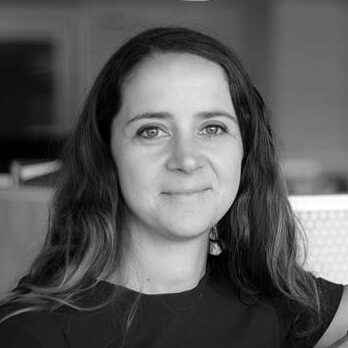
DELPHINE LANNUZEL
Polar biogeochemist
ARC Future Fellow
E: delphine.lannuzel@utas.edu.au
Social Links
About Delphine & AAPP Involvement:
Professor Delphine Lannuzel is a specialist in polar biogeochemistry, based at the Institute for Marine and Antarctic Studies (IMAS). She is internationally regarded for her research on the iron cycle in sea ice.
In AAPP Delphine will work with modelers and field observationalists to evaluate the role of cryospheric iron sources in fuelling marine productivity around Antarctica.
About Delphine & AAPP Involvement:
Professor Delphine Lannuzel is a specialist in polar biogeochemistry, based at the Institute for Marine and Antarctic Studies (IMAS). She is internationally regarded for her research on the iron cycle in sea ice.
In AAPP Delphine will work with modelers and field observationalists to evaluate the role of cryospheric iron sources in fuelling marine productivity around Antarctica.
Biography
Delphine was awarded her PhD in 2006 at Université Libre de Bruxelles upon presentation of a thesis on “The Biogeochemistry of Iron in the Antarctic sea ice Environment”. She was the first to report the high iron concentration in Antarctic pack ice compared to ice-free waters, therefore highlighting the role of sea ice as a seasonal ocean fertilizer. She has since produced the large majority of the results on trace metals in sea ice and is unequivocally at the forefront of this research nationally and internationally. Delphine has expanded her interest towards ice shelf – ocean interactions, as well as biogeochemical modelling.
Delphine published over 60 papers in high-ranking peer review journals, 12 as a lead-author. Her articles have received over 4,000 citations, and her h-index is 32 (source: Google Scholar, 15 May 2021). Her publication output provides evidence for the research excellence she has developed on her own as well as through new and ongoing collaborations with top-echelon researchers from the fields of glaciology, marine chemistry, marine biology, analytical chemistry, modeling and atmospheric sciences. Delphine has led several research and Antarctic-based field projects since the end of her PhD.
The awards, fellowships and honors received from her peers within the 5 years following the award of her PhD undoubtedly acknowledge her early commitment to achieve research excellence. She has secured and managed her own funding since her 1st ARC grant in 2008, with back-to-back ARC APD (2008-2011), ARC DECRA (2012-2016) and ARC Future (2020-2024) Fellowships. Delphine’s current ARC Future Fellowship aims at assessing the role of the cryosphere as an ocean fertiliser.
Between 2016 and 2020, Delphine held a lecturing position at IMAS, which also included managerial roles like Graduate Research Coordinator and Deputy Centre Head for Oceans & Cryosphere. She also led AAPP between 2019 and 2020. She is currently the UTAS deputy director for ACEAS (2021-2025).
Current AAPP activities
Delphine is working with Pat Wongpan and Klaus Meiners on developing biogeochemistry, including the iron cycle, in the LIM1D sea-ice model.
Scientific committee memberships
Steering committee member to BEPSII ("Biogeochemical Exchange Processes at Sea-Ice Interfaces", since 2014
Steering committee member for the Southern Ocean Observing System, since 2020
Awards/grants
ARC Future Fellowship, 2019
Thomson Reuters Citation Award Winner, 2016
ARC DECRA, 2012
Recipient of the University of Tasmania Vice Chancellor Award for Research Excellence, 2011
ARC APD Fellowship, 2009
Selected publications
Lannuzel D., Tedesco L., van Leeuwe M. et al.(2020) The future of Arctic sea-ice biogeochemistry and ice-associated ecosystems. Nature Climate Change 10, 983–992 https://doi.org/10.1038/s41558-020-00940-4
Lannuzel D, Vancoppenolle M, van der Merwe P, de Jong J, Grotti M, Nishioka J, Meiners K, Schoemann V, 2016. Iron in sea ice: review and new insights, Elem Sci Anth4: 000130.DOI: http://dx.doi.org/10.12952/journal.elementa000130
Herraiz-Borreguero L, Lannuzel D, Treverrow A, van der Merwe P and Pedro J, 2016. Contribution of marine ice iron to the fertilization of Prydz Bay, East Antarctica, Journal of Geophysical Research – Oceans, 121 (8), doi:1002/2016JC011687
Lannuzel D., Grotti M, and van der Merwe P. (2015) Organic ligands control the concentrations of dissolved iron in Antarctic sea ice, Marine Chemistry, 174, 120-130
Duprat L., Corkill M., Genovese C., Townsend A. T., Meiners K.M., and Lannuzel D. (2020). Nutrient distribution in East Antarctic summer sea ice: a potential iron contribution from glacial basal melt. Journal of Geophysical Research – Oceans, 125(12), e2020JC016130

BENOIT LEGRESY
Sea level scientist
Co-leader Project 4: Oceanography
About Benoit & AAPP Involvement:
Dr Benoit Legresy came to the sea level group at CSIRO Oceans and Atmosphere in July 2014 as a sea level scientist. He is studying global and regional sea level evolution. He focuses on observations, mainly satellite altimetry and tide gauge records. He participates in satellite altimetry calibration/validation on the Australian sites, such as the Surface Water Ocean Topography (SWOT) satellite. His previous research involved glaciology and oceanography, geodesy and remote sensing.
Benoit is a co-leader of AAPP Project 4 (Oceanography).
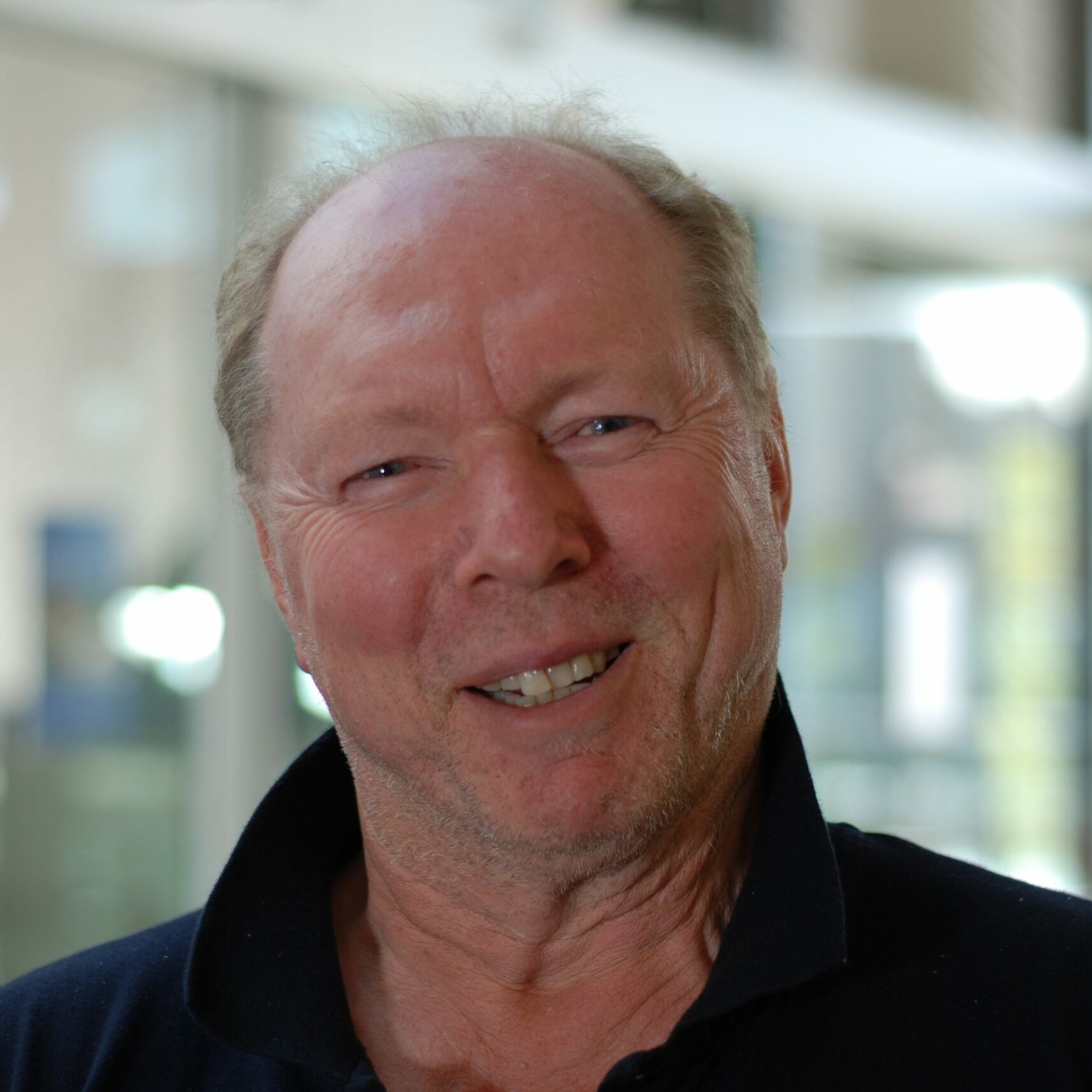
Current AAPP Activities:
Dr Massom’s current AAPP activities (involving close collaboration with AAPP and external colleagues) relate to:
- Combining satellite, model and other data to determine how, where and why large-scale patterns of Antarctic sea ice coverage and seasonality are changing and varying;
- Satellite mapping of coastal landfast sea ice (fast ice), change and variability in its coverage, and its regional and seasonal patterns; and
- Investigating linkages between sea ice (both fast and pack ice) and coastal ice sheet processes, including iceberg calving.
Current AAPP Activities:
Dr Massom’s current AAPP activities (involving close collaboration with AAPP and external colleagues) relate to:
Combining satellite, model and other data to determine how, where and why large-scale patterns of Antarctic sea ice coverage and seasonality are changing and varying;
Satellite mapping of coastal landfast sea ice (fast ice), change and variability in its coverage, and its regional and seasonal patterns; and
Investigating linkages between sea ice (both fast and pack ice) and coastal ice sheet processes, including iceberg calving.
Biography
Dr Rob Massom is a senior sea-ice research scientist working within both the Antarctic Climate Program of the Australian Antarctic Division (AAD) and AAPP Project 6 Sea Ice. His experience in sea-ice research involves both the Arctic (1980-92) and Antarctic (1986-present), including participation on 15 major field campaigns. His strongly collaborative and cross-disciplinary work not only addresses the key research questions of AAPP Project 6 relating to determining how, where and why Antarctic sea ice is changing and varying, and what the physical and ecological consequences are. It also provides key sea ice-related input in support of research across all AAPP Themes on the ocean, atmosphere, krill and ecosystems, and ice shelves.
Dr Massom’s current research interests are: the nature and drivers of large-scale change and variability in the distribution and properties of Antarctic sea ice (both moving pack and coastal fast ice); the physical and ecological effects of sea ice change and variability (including extreme meteorological events); carrying out field measurements in support of process studies, improving numerical modelling and the validation of satellite remote sensing data; the thickness, properties and role of snow in the sea ice environment; the measurement and monitoring of polar snow and ice properties and distribution using satellite and other remote sensing, and development of remote sensing techniques; Antarctic coastal processes and interactions between sea ice, icebergs and floating ice-sheet margins, including the role of sea ice (loss) in ice shelf stabilization (calving/break up); and Antarctic coastal polynyas.
Associated links
https://rmdb.research.utas.edu.au/public/rmdb/q/indiv_detail_warp_trans/1520

About Klaus & AAPP Involvement:
Klaus's research is directed at understanding the impacts of changing sea ice conditions on Antarctic marine ecosystems and Southern Ocean biogeochemical cycles. He is particularly interested in science that links sea ice physics, biogeochemistry and ecology. Contributing to AAPP as co-leader of Project 6, his current work focusses on understanding physical drivers of ice-associated algal production and the importance of sea ice as habitat for Antarctic krill. Klaus is also involved in the development of non-invasive (bio-optical) techniques to concomitantly measure sea-ice physical properties and ice algal biomass from moored platforms and underwater vehicles, aimed at up-scaling localised observations to inform the development and evaluation of sea-ice ecosystem models.
About Klaus & AAPP Involvement:
Klaus's research is directed at understanding the impacts of changing sea ice conditions on Antarctic marine ecosystems and Southern Ocean biogeochemical cycles. He is particularly interested in science that links sea ice physics, biogeochemistry and ecology. Contributing to AAPP, his current work focusses on understanding physical drivers of ice-associated algal production and the importance of sea ice as habitat for Antarctic krill. Klaus is also involved in the development of non-invasive (bio-optical) techniques to concomitantly measure sea-ice physical properties and ice algal biomass from moored platforms and underwater vehicles, aimed at up-scaling localised observations to inform the development and evaluation of sea-ice ecosystem models.
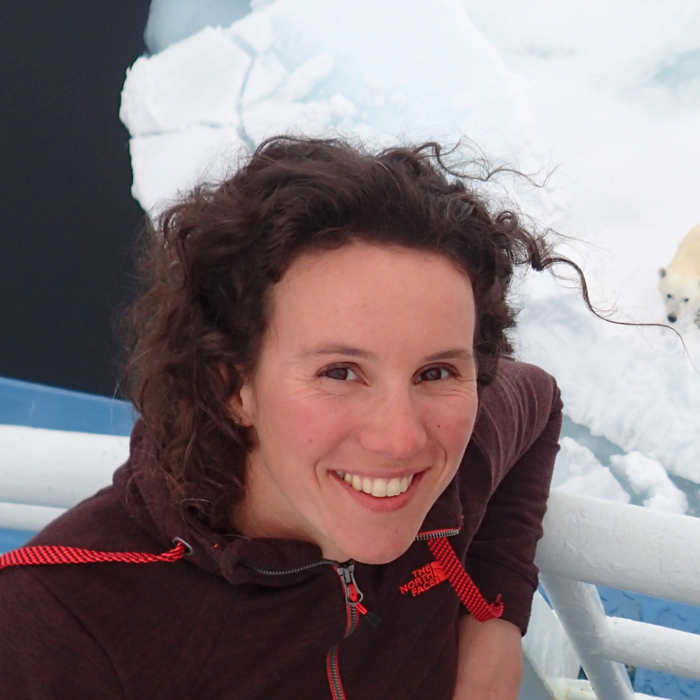
AMELIE MEYER
Senior Research Fellow (affiliate)
Physical oceanographer
Social links
About Amelie & AAPP Involvement:
Amelie Meyer is a physical oceanographer whose research focuses on how polar oceans respond to climate change. She combines fine-scale turbulence measurements, large-scale observations, and modelling to study interactions between the ocean, sea ice, atmosphere, and ecosystems. Her work has advanced understanding of ocean mixing under Antarctic sea ice, a key process influencing sea-ice cover, climate variability, and the global heat balance.
Biography
Amelie studied Oceanography at the National Oceanography Centre in the UK and earned her PhD in Physical Oceanography from the University of Tasmania in 2014. She worked as a Postdoctoral Fellow at the Norwegian Polar Institute in Tromsø, focusing on ocean sea ice interactions in the rapidly changing Arctic. In 2018, she joined the ARC Centre of Excellence for Climate Extremes, before being awarded an ARC Discovery Early Career Researcher Award (DECRA) Fellowship in 2021 to investigate ocean mixing and climate links under Antarctic sea ice.
She has published more than 30 peer-reviewed articles, including in Nature family journals, with over 1,900 citations and an H-index of 21. She is a sought-after speaker at international conferences and has contributed to national climate and ocean reviews. Amelie is strongly committed to public engagement and knowledge translation. She has authored policy briefs, advised government committees, and spoken at public science events, museums, and schools to share the importance of polar oceans for Earth’s climate. She regularly engages with media and outreach initiatives to communicate science beyond academia.
Significant awards/grants
2021 ABC TOP 5 Science residency recipient
2020 ARC DECRA Fellowship
2019 Tasmanian Young Tall Poppy Science Award
Selected publications (top 5)
Hobbs W., P. Spence, A. Meyer, S. Schroeter, A. D. Frasier, P. Reid, T. R. Tian, etal. and P. Boyd. Observational Evidence for a Regime Shift in Summer Antarctic Sea Ice. J. Climate, 37(2263–2275), doi.org/10.1175/JCLI-D-23-0479.1, 2024.
Bennetts, L. G., Shakespeare, C. J., Vreugdenhil, C. A., Foppert, A., Gayen, B., A. Meyer, et al. Closing the Loops on Southern Ocean Dynamics: From the Circumpolar Current to Ice Shelves and From Bottom Mixing to Surface Waves. Reviews of Geophysics, 62, doi.org/10.1029/2022RG000781, 2024.
Yang K., A. Meyer, P. Strutton, and A. M. Fischer. Global trends of fronts and chlorophyll in a warming ocean. Commun. Earth Environ., 4(1), doi.org/10.1038/s43247-023-01160-2, 2023
Chapman C.C., M.A. Lea, A. Meyer, J.B. Sallee, and M. Hindell. Defining Southern Ocean fronts and their influence on biological and physical processes in a changing climate. Nature Climate Change, 10, 209-2019, doi.org/10.1038/s41558-020-0705-4, 2020
Meyer A., I. Fer, and A. Sundfjord. Mixing rates and vertical heat fluxes north of Svalbard from Arctic winter to spring. Journal of Geophysical Research: Oceans, 122, 4569–4586, doi:10.1002/2016JC012441, 2017.
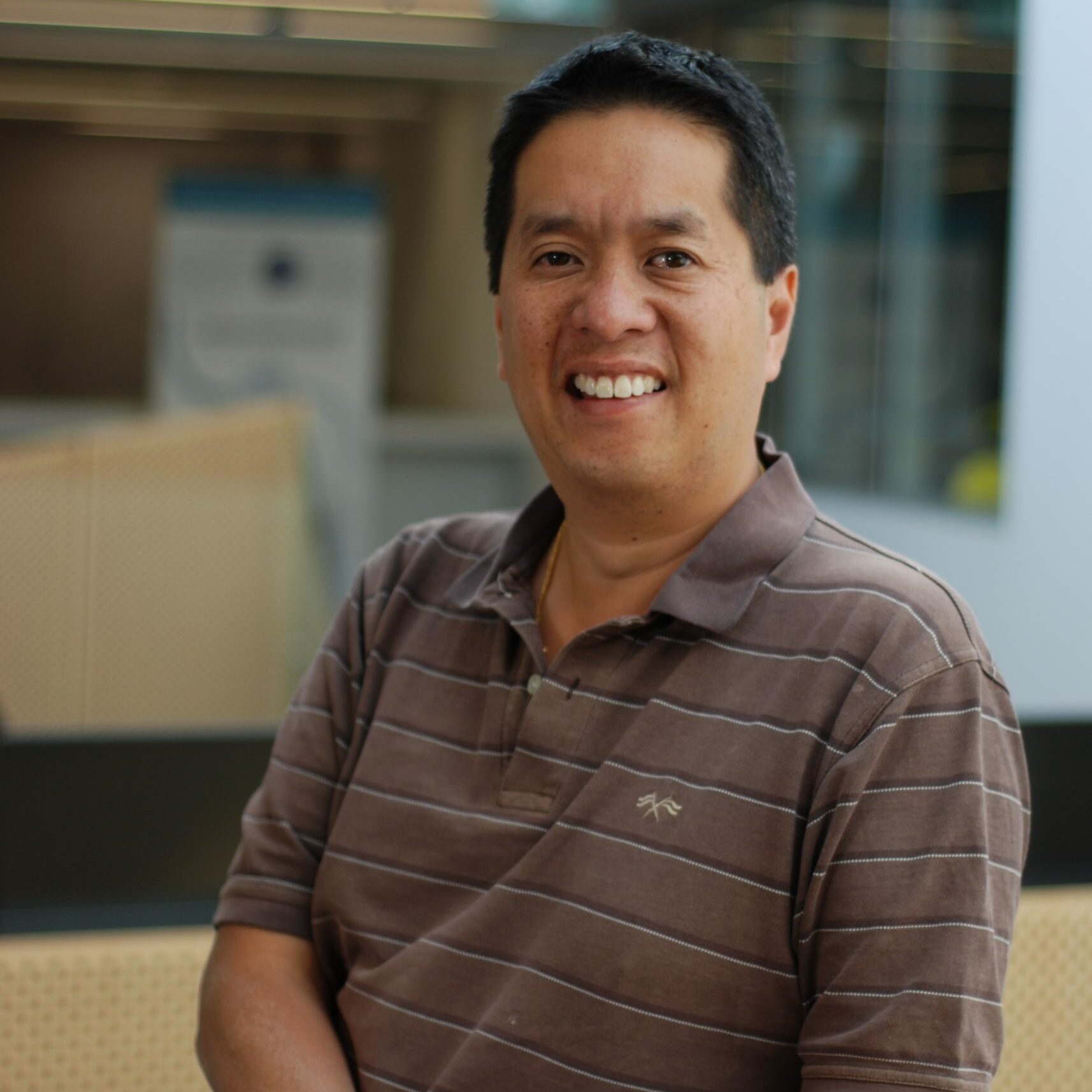
About Andrew & AAPP Involvement:
Andrew's research is focused on palaeoclimate - ‘past climate’. He has been lucky enough to work with national and international research teams that use ice core and marine sediment records that can be used to reconstruct past climate conditions.
Andrew's research contributes to the milestones, goals and deliverables for Project 2 at AAPP.
About Andrew & AAPP Involvement:
Andrew's research is focused on palaeoclimate - ‘past climate’. He has been lucky enough to work with national and international research teams that use ice core and marine sediment records that can be used to reconstruct past climate conditions.
Andrew's research contributes to the milestones, goals and deliverables for Project 2 at AAPP.
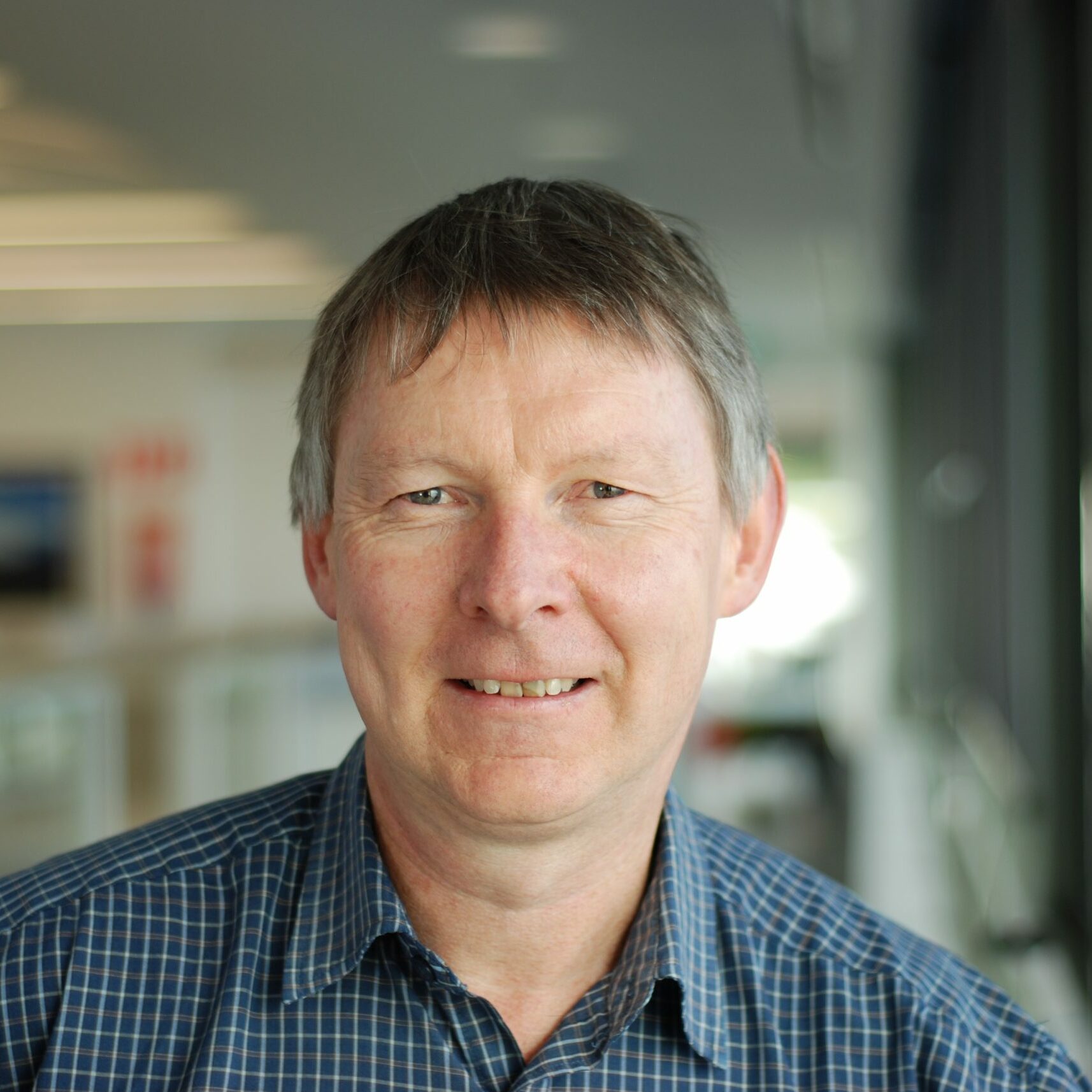
About Damian & AAPP Involvement:
Atmospheric radars have been a key element of Damian's research career and this continues to be true through his role in the operation of a wind profiler at Davis. This profiler measures the wind many times an hour up into the stratosphere and complements the Bureau of Meteorology’s radiosonde balloon measurements and forecasting capabilities. Radar data contributes to AAPP projects and feed into Damian's other research areas of small-scale waves in the atmosphere and their representation in climate models.
About Damian & AAPP Involvement:
Atmospheric radars have been a key element of Damian's research career and this continues to be true through his role in the operation of a wind profiler at Davis. This profiler measures the wind many times an hour up into the stratosphere and complements the Bureau of Meteorology’s radiosonde balloon measurements and forecasting capabilities. Radar data contributes to AAPP projects and feed into Damian's other research areas of small-scale waves in the atmosphere and their representation in climate models.

About Craig & AAPP Involvement:
I design, build and utilize instrumentation for measuring CO2 in the ocean. In AAPP this includes surface pCO2 from ships and moorings and dissolved inorganic carbon and total alkalinity in the surface and deep ocean.
About Craig & AAPP Involvement:
I design, build and utilize instrumentation for measuring CO2 in the ocean. In AAPP this includes surface pCO2 from ships and moorings and dissolved inorganic carbon and total alkalinity in the surface and deep ocean.
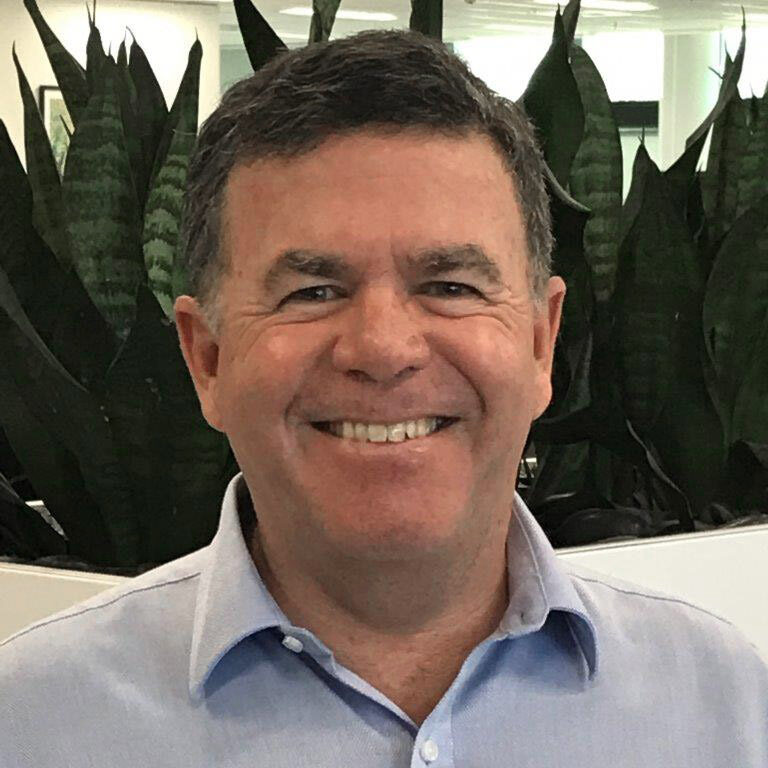
SCOTT NICHOL
Marine geomorphologist
AAPP Management Committee
About Scott & AAPP Involvement:
Scott is a marine geomorphologist with a particular interest in continental margin, coastal, and estuarine systems. His research themes include reconstructions of shelf to slope depositional histories, impacts of extreme events (tsunami) on sedimentation processes, and interaction of physical and biological processes. He has a strong emphasis on field-based empirical and interdisciplinary research, with published studies from projects in Australia, New Zealand, Canada, US, Ireland and the Maldives. Scott is a member of the AAPP Management Committee, representing Geoscience Australia as an associate partner.
About Scott & AAPP Involvement:
Scott is a marine geomorphologist with a particular interest in continental margin, coastal, and estuarine systems. His research themes include reconstructions of shelf to slope depositional histories, impacts of extreme events (tsunami) on sedimentation processes, and interaction of physical and biological processes. He has a strong emphasis on field-based empirical and interdisciplinary research, with published studies from projects in Australia, New Zealand, Canada, US, Ireland and the Maldives. Scott is a member of the AAPP Management Committee, representing Geoscience Australia as an associate partner.
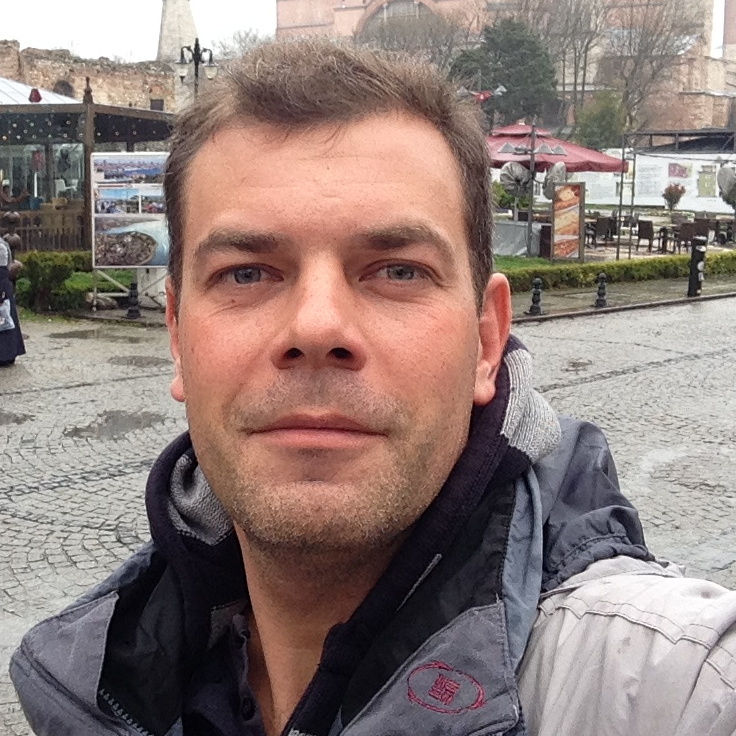
About Max & AAPP Involvement:
Max's research relates to the University's research theme of Marine, Antarctic and Maritime. His research interests span a wide range of problems in the area of Physical Oceanography ranging from oceanic internal waves and mixing at small scales to the dynamics of the global overturning circulation and its role for the carbon uptake and storage at large scales. In his work, Maxim uses a combination of theory, process-oriented and realistic global numerical simulations, and observations to understand fundamental physical processes in the ocean and their impact on the global circulation and climate.
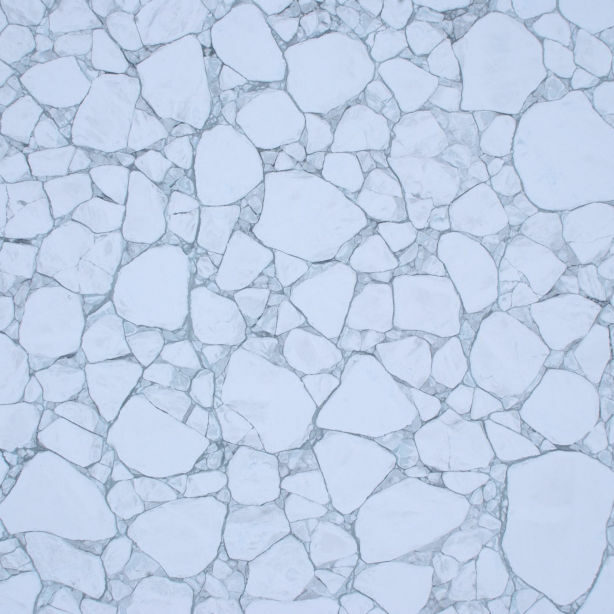
ABRAHAM PASSMORE
Technician
About Abraham & AAPP Involvement:
Abraham organises the collection of seawater samples on Antarctic voyages to track ocean carbon dioxide levels. He analyses the samples for alkalinity and total CO2 either on the ship or in the CSIRO ocean carbon laboratory in Hobart, using instrumentation and certified reference materials to ensure high precision analytical results.
About Abraham & AAPP Involvement:
Abraham organises the collection of seawater samples on Antarctic voyages to track ocean carbon dioxide levels. He analyses the samples for alkalinity and total CO2 either on the ship or in the CSIRO ocean carbon laboratory in Hobart, using instrumentation and certified reference materials to ensure high precision analytical results.
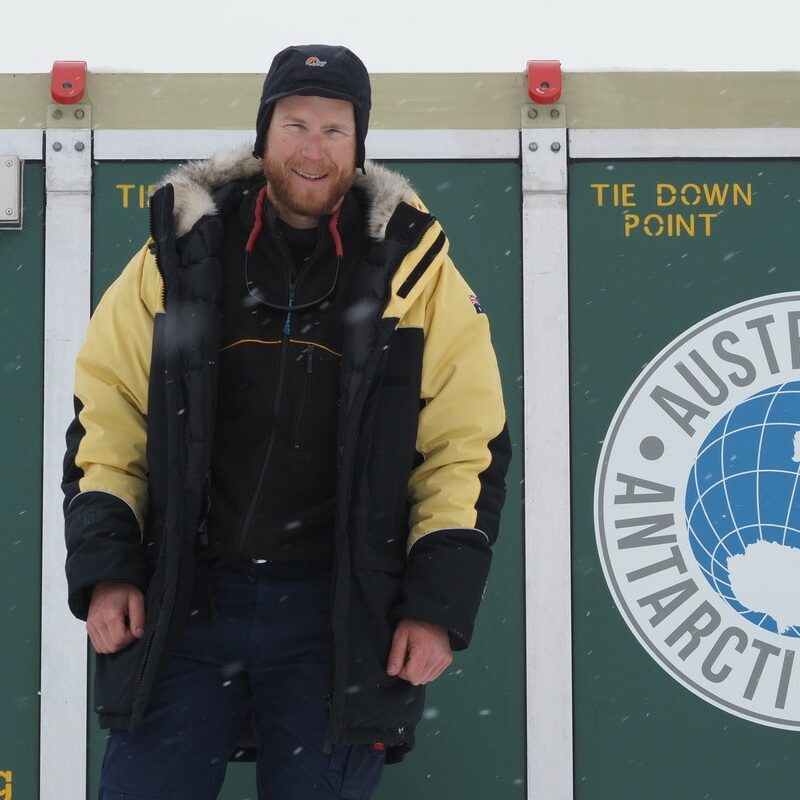
Current AAPP Activities:
Contributing to Project 2: Ice Cores in AAPP Theme 1: Antarctica’s Influence on Climate and Sea Level.
Planning and coordination of Million Year Ice Core Project science in order to deliver key Project 2 Objectives:
- What does the ice core record of past climate and carbon dioxide concentrations spanning more than 800,000 years reveal about climate and climate-carbon feedbacks?
- How did the partitioning of carbon between different sinks (ocean, terrestrial, atmosphere) change (in volumes and rates) in the past (as resolved by isotopes of CO2 and CH4)?
- What are the implications for future climate, sea-level and ice sheet stability that emerge from the oldest ice record, and what do past interglacial conditions indicate as potential analogues of future warming?
- What does the record of recent millennia show for key environmental parameters and climate forcings? (e.g. snow accumulation, sea-ice, aerosols, dust, volcanism, solar activity and greenhouse gases)
Current AAPP Activities:
Contributing to Project 2: Ice Cores in AAPP Theme 1: Antarctica’s Influence on Climate and Sea Level.
Planning and coordination of Million Year Ice Core Project science in order to deliver key Project 2 Objectives:
- What does the ice core record of past climate and carbon dioxide concentrations spanning more than 800,000 years reveal about climate and climate-carbon feedbacks?
- How did the partitioning of carbon between different sinks (ocean, terrestrial, atmosphere) change (in volumes and rates) in the past (as resolved by isotopes of CO2 and CH4)?
- What are the implications for future climate, sea-level and ice sheet stability that emerge from the oldest ice record, and what do past interglacial conditions indicate as potential analogues of future warming?
- What does the record of recent millennia show for key environmental parameters and climate forcings? (e.g. snow accumulation, sea-ice, aerosols, dust, volcanism, solar activity and greenhouse gases)
Biography
I work for the Australian Antarctic Division as the Lead Project Scientist in the Million Year Ice Core (MYIC) Project. The MYIC Project aims to find, drill, analyse and interpret the climate records from Antarctica’s oldest ice and to help to solve major open questions on climate-carbon cycle-cryosphere feedbacks involved in the Earth’s ice age cycles.
The ice age cycles are the defining feature of the past several million years of Earth’s climate history. The scale of transformation of the Earth system across the ice ages is immense: they dominate millennial scale variability in carbon cycling, sea level, ice sheet size and distribution and even human migration and evolution. While there is a consensus that cyclic changes in the Earth’s orbit are involved in forcing the ice ages we still lack an understanding of the feedback processes which amplify such small orbital signals into such profound Earth system changes.
The MYIC will nearly double the age of the existing oldest ice core record, reaching back beyond 1.2 million years ago to a period where the ice age cycles became faster and less intense. The data on climate and environmental conditions preserved in the ice is needed to resolve why this change of pacing occurred and to help answer larger open questions about climate, carbon cycle cryosphere feedbacks. This research contributes to AAPP Theme 2: Antarctica’s influence on climate and sea level.
I received a PhD in ice core Paleoclimatology from the University of Tasmania in 2012. Prior to being appointed to the AAD I held postdoc positions at leading US and European ice core laboratories. The University of Washington and the University of Copenhagen. I have participated in ice core field campaigns in Antarctica, Greenland, the Canadian Rockies and the sub Antarctic islands. I love my job!
I hail from the Great Southern of Western Australia and enjoy going back to the family farm.
Awards / Grants
| Uwe Radok Award 2013 |
| JISAO Fellowship 2013– University of Washington |
| Marie Curie Fellowship 2014– University Copenhagen |
| Co-Investigator: Did a previous collapse of the Antarctic Ice Sheet cause abrupt climate change in the Southern Hemisphere? Marsden Fund, New Zealand, 2018-onging. |
| Co-Investigator: Antarctic Circumnavigation Expedition, Sub-Antarctic Ice Core Expedition (subICE), Australia, UK, US, Swiss, 2016–ongoing. |
Selected Publications

About Bea & AAPP Involvement:
Dr Beatriz Peña-Molino joined CSIRO in 2017. She is a physical oceanographer with interests in the large scale dynamics of the ocean and its role in climate. In her work she explores the tropical ocean, through the mid-latitudes, and to the polar systems. Prior to joining CSIRO she completed a PhD in Physical Oceanography from the MIT-WHOI Joint Program (USA). Her work then focused on the western North Atlantic, looking at the interaction between the upper and lower limbs of the Meridional Overturning Circulation. In 2011 Dr Peña-Molino came to Australia and joined the Antarctic Climate and Ecosystems Cooperative Research Centre (ACE CRC), where she worked in problems related to the dynamics of the Antarctic Circumpolar Current and its interaction with topography, formation and export of Antarctic Bottom Water, and ice shelf-ocean interactions in the Antarctic margins. At CSIRO she continues her work in the Southern Ocean but has also become a member of the CSHOR project Indo-Pacific Interbasin Exchange. There she works towards characterizing the different scales of variability in the Indonesian Througflow (ITF). Using both in situ and remote observations she hopes to contribute to our understanding of the forcing mechanisms of the ITF and how the ITF impacts climate both at the regional and global scales.
About Bea & AAPP Involvement:
Dr Beatriz Peña-Molino joined CSIRO in 2017. She is a physical oceanographer with interests in the large scale dynamics of the ocean and its role in climate. In her work she explores the tropical ocean, through the mid-latitudes, and to the polar systems. Prior to joining CSIRO she completed a PhD in Physical Oceanography from the MIT-WHOI Joint Program (USA). Her work then focused on the western North Atlantic, looking at the interaction between the upper and lower limbs of the Meridional Overturning Circulation. In 2011 Dr Peña-Molino came to Australia and joined the Antarctic Climate and Ecosystems Cooperative Research Centre (ACE CRC), where she worked in problems related to the dynamics of the Antarctic Circumpolar Current and its interaction with topography, formation and export of Antarctic Bottom Water, and ice shelf-ocean interactions in the Antarctic margins. At CSIRO she continues her work in the Southern Ocean but has also become a member of the CSHOR project Indo-Pacific Interbasin Exchange. There she works towards characterizing the different scales of variability in the Indonesian Througflow (ITF). Using both in situ and remote observations she hopes to contribute to our understanding of the forcing mechanisms of the ITF and how the ITF impacts climate both at the regional and global scales.
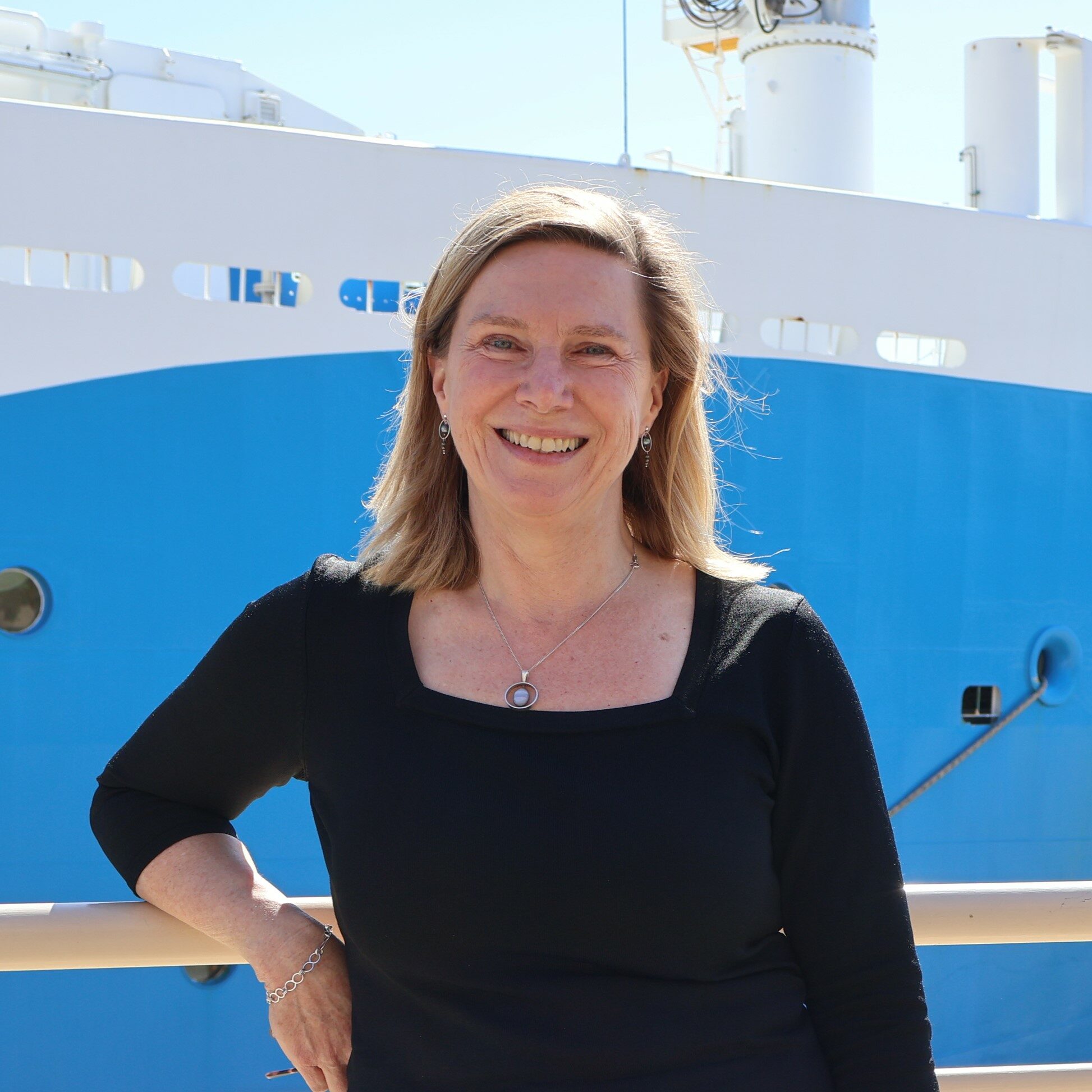
About Helen & AAPP Involvement:
Dr Helen Phillips is a Senior Research Fellow in Physical Oceanography at the Institute for Marine and Antarctic Studies, University of Tasmania. She is interested in how the small-scale features in the ocean, such as waves and eddies, affect the large currents that are critical pathways for heat and other properties to be spread through the ocean. She is an observational oceanographer, spending time on research vessels to collect observations in the Indian and Southern Oceans, but also using robotic instruments to collect data remotely and send it home over the mobile phone network.
About Helen & AAPP Involvement:
Dr Helen Phillips is a Senior Research Fellow in Physical Oceanography at the Institute for Marine and Antarctic Studies, University of Tasmania. She is interested in how the small-scale features in the ocean, such as waves and eddies, affect the large currents that are critical pathways for heat and other properties to be spread through the ocean. She is an observational oceanographer, spending time on research vessels to collect observations in the Indian and Southern Oceans, but also using robotic instruments to collect data remotely and send it home over the mobile phone network.
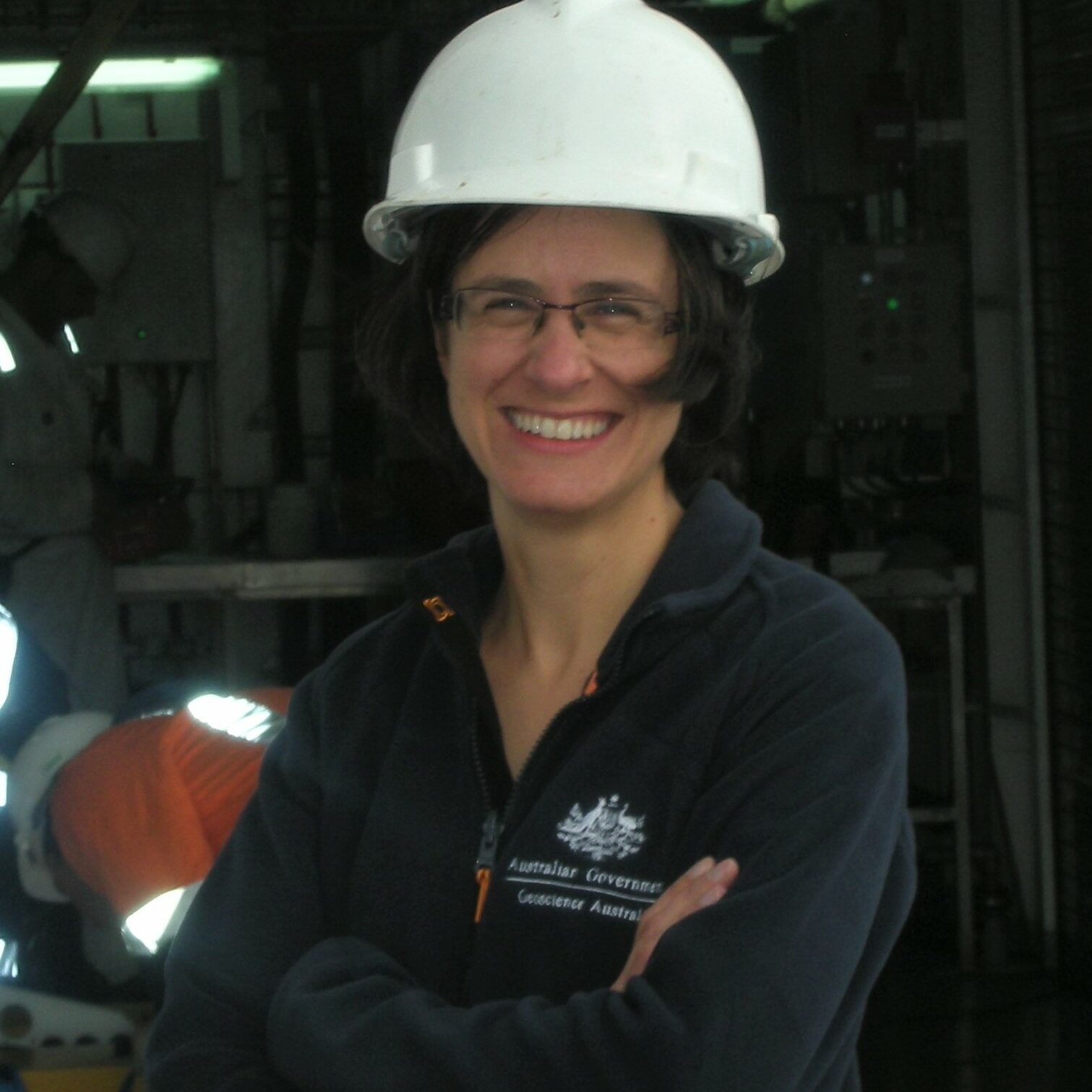
Current AAPP Activities:
As part of her contribution to the AAPP, Alix will be focussing on interpreting and collecting high resolution multibeam bathymetry data. To help focus research efforts she will first undertake a bathymetry gap analysis to inform future field campaigns. Collection of seafloor bathymetry will contribute to:
- interpretation of seafloor geomorphology and past ice sheet processes;
- application of bathymetry data to inform oceanographic processes and pathways for ocean circulation.
- understanding seafloor habitats and the distribution of seafloor ecosystems.
Current AAPP Activities:
As part of her contribution to the AAPP, Alix will be focussing on interpreting and collecting high resolution multibeam bathymetry data. To help focus research efforts she will first undertake a bathymetry gap analysis to inform future field campaigns. Collection of seafloor bathymetry will contribute to:
- interpretation of seafloor geomorphology and past ice sheet processes;
- application of bathymetry data to inform oceanographic processes and pathways for ocean circulation.
- understanding seafloor habitats and the distribution of seafloor ecosystems.
Biography
Alix is a marine geoscientist focussed on understanding seafloor environments. In her research she uses seafloor bathymetry, sediment samples and imagery to understanding past and present marine, glacial, oceanographic and biological processes. Her research has contributed to understanding seafloor habitats around the Antarctic margin, including marine protected area planning.
As part of her work with the AAPP she is particularly interested in interpreting glacial features revealed by high resolution multibeam bathymetry to understand past styles of ice sheet advance and retreat across the Antarctic continental shelf. These datasets can also inform a range of other applications, including understanding pathways for ocean circulation and the distribution of seafloor habitats.
Alix completed a PhD within the Institute of Antarctic and Southern Ocean Studies at the University of Tasmania in 2004. She has worked at Geoscience Australia in Canberra since 2002. She has worked on the continental shelf and within slope canyons from the northern tropics of Australia, through the temperate regions and south to the pole. She has sailed on 11 research voyages, with 3 to the Antarctic margin.
Scientific Committee Memberships
| Australian representative, Geoscience Science Group, Scientific Committee for Antarctic Research (SCAR) (2018 – present) |
Awards / Grants
| Endeavour Executive Leadership Award (2019) |
| RV Investigator voyage IN2022_V01: Antarctic Bottom Water production in the past: Records from marine sediments, Cape Darnley, East Antarctica (Chief Scientist) |
| Australian Antarctic Science Project 4333: Interactions of the Totten Glacier with the Southern Ocean through multiple glacial cycles (Co-Investigator) |
| Australian Antarctic Science Project 4320: Characterising East Antarctic seabed habitats. A. Post. 2014-2020 (Chief Investigator) |
| Australian Antarctic Science Project 4392: Shallow water bathymetric mapping using high-resolution multispectral satellite imagery (Co-Investigator) |
Selected Publications
| Post, A., O'Brien, P., Edwards, S., Carroll, A., Malakoff, K., Armand, L., 2020. Upper slope processes and seafloor ecosystems on the Sabrina continental slope, East Antarctica. Marine Geology 422, 106091. |
| O'Brien, P., Post, A., Edwards, S., Martin, T., Caburlotto, A., Donda, F., Leitchenkov, G., Romeo, R., Duffy, M., Evangelinos, D., Holder, L., Leventer, A., López Quirós, A., Opdyke, B., Armand, L., 2020. Continental slope and rise geomorphology seaward of the Totten Glacier, East Antarctica (112°E-122°E). Marine Geology 427, 106221. |
| Smith, J.A., Graham, A.G.C., Post, A.L., Hillenbrand, C.D., Bart, P.J., Powell, R.D., 2019. The marine geological imprint of Antarctic ice shelves. Nature Communications 10, 5635. |
| Post, A.L., Lavoie, C., Domack, E.W., Leventer, A., Shevenell, A., Fraser, A.D., 2017. Environmental drivers of benthic communities and habitat heterogeneity on an East Antarctic shelf. Antarctic Science 29, 17-32. |
| Carson, C.J., Post, A.L., Smith, J., Walker, G., Waring, P., Bartley, R., Raymond, B., 2017. The seafloor geomorphology of the Windmill Islands, Wilkes Land, East Antarctica: Evidence of Law Dome ice margin dynamics. Geomorphology 292, 1-15. |
Associated links
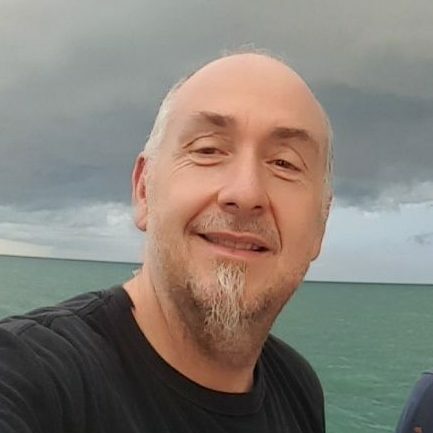
ALAIN PROTAT
Atmospheric scientist
Co-leader Project 1: Atmosphere
Social Links
Current AAPP Activities:
- Analysis of Southern Ocean precipitation properties using shipborne disdrometer observations from the OceanRAIN program
- Analysis of cloud-radiation interactions over the Southern Ocean using cloud radar, lidar, and surface radiation observations
- Development of high-resolution numerical weather prediction simulations with ACCESS-C for all the recent observational campaigns.
- ACCESS-C model evaluation to better understand underlying causes of the surface radiation biases found in several models over the Southern Ocean and around Antarctica
- Co-supervision of two AAPP post-docs on understanding cloud-radiation-precipitation-radiation interactions and inform future model sensitivity tests to improve ACCESS (Marc Mallet) and on ACCESS model improvements of the representation of the aerosol-chemistry-cloud interactions (Sonya Fiddes).
- Co-leadership of the atmospheric component of AAPP (Theme 1 – Project 1)
Current AAPP Activities:
- Analysis of Southern Ocean precipitation properties using shipborne disdrometer observations from the OceanRAIN program
- Analysis of cloud-radiation interactions over the Southern Ocean using cloud radar, lidar, and surface radiation observations
- Development of high-resolution numerical weather prediction simulations with ACCESS-C for all the recent observational campaigns.
- ACCESS-C model evaluation to better understand underlying causes of the surface radiation biases found in several models over the Southern Ocean and around Antarctica
- Co-supervision of two AAPP post-docs on understanding cloud-radiation-precipitation-radiation interactions and inform future model sensitivity tests to improve ACCESS (Marc Mallet) and on ACCESS model improvements of the representation of the aerosol-chemistry-cloud interactions (Sonya Fiddes).
- Co-leadership of the atmospheric component of AAPP (Theme 1 – Project 1)
Biography
At the Bureau of Meteorology, I work in the Science and Innovation Group, Weather and Environmental Prediction Program, where I lead the "Radar Science and Nowcasting" Team. The core of my research is to use radars at different frequencies and on different platforms (ground, ship, aircraft, satellite) to better understand cloud and convection (storms) processes. This better understanding of clouds and convection is then exploited to evaluate and improve satellite products and the representation of clouds and convection in numerical weather prediction and climate models.
In AAPP, my role is to co-lead the Atmospheric component (Theme 1 – Project 1), and my main objectives are to analyse the numerous observations we have collected since 2016 to better understand aerosol-cloud-radiation-precipitation processes and inform the development of improved parameterizations of these processes in the Australian Climate model (ACCESS-CM2).
Selected Publications
| McFarquhar, G. M.,, C. Bretherton, R. Marchand, A. Protat, P. J. DeMott, S. P. Alexander, G. C. Roberts, C. H. Twohy, D. Toohey, S. Siems, Y. Huang, R. Wood, R. M. Rauber, S. Lasher-Trapp, J. Jensen, J. Stith, G. G. Mace, J. Um, E. Järvinen, M. Schnaiter, A. Gettelman, K. J. Sanchez, C. S. McCluskey, L. M. Russell, I. L. McCoy, R. Atlas, C. G. Bardeen, K. A. Moore, T. C. J. Hill, R. S. Humphries, M. D. Keywood, Z. Ristovski, L. Cravigan, R. Schofield, C. Fairall, M. D. Mallet, S. M. Kreidenweis, B. Rainwater, J. D’Alessandro, Y. Wang, W. Wu, G. Saliba, E. J. T. Levin, S. Ding, F. Lang, S. C.H. Truong, C. Wolff, J. Haggerty, M. J. Harvey, A. Klekociuk and A. McDonald, 2020: Observations of clouds, aerosols, precipitation, and surface radiation over the Southern Ocean: An overview of CAPRICORN, MARCUS, MICRE and SOCRATES. Bulletin of the American Meteorological Society, Accepted with minor revisions, August2020. |
| Protat, A., C. Klepp, V. Louf, W. Petersen, S. P. Alexander, A. Barros, and G. G. Mace, 2019: The latitudinal variability of oceanic rainfall properties and its implication for satellite retrievals. Part 1: The Latitudinal Variability of Drop Size Distribution Properties & Part 2: The Relationships between Radar Observables and Drop Size Distribution Parameters. J. Geophys. Res. Atmos., 124, 13291-13311, https://doi.org/10.1029/2019JD031010. |
| Alexander, S. P., and A. Protat, 2018: Southern Ocean cloud properties as observed from the surface and satellite. J. Geophys. Res. Atmos., 123. https://doi.org/10.1002/2017JD026552. |
| Mace, G. G., and A. Protat, 2018: Clouds over the Southern Ocean as observed from the RV Investigator during CAPRICORN. Part 1: Cloud occurrence and phase partitioning. J. Appl. Meteor. Clim.. 57, 1783-1803. |
| Protat, A., E. Schulz, L. Rikus, Z. Sun, and Y. Xiao, 2017: Shipborne observations of the radiative effect of Southern Ocean Clouds. J. Geophys. Res. Atmos., 122, 318-328. |
Associated links

BEN RAYMOND
Computational ecologist
Social Links
About Ben & AAPP Involvement:
Ben undertakes cross-disciplinary integration and syntheses of data, including analysis, modelling, and visualization, applied to the Southern Ocean and Antarctica.
About Ben & AAPP Involvement:
Ben undertakes cross-disciplinary integration and syntheses of data, including analysis, modelling, and visualization, applied to the Southern Ocean and Antarctica.
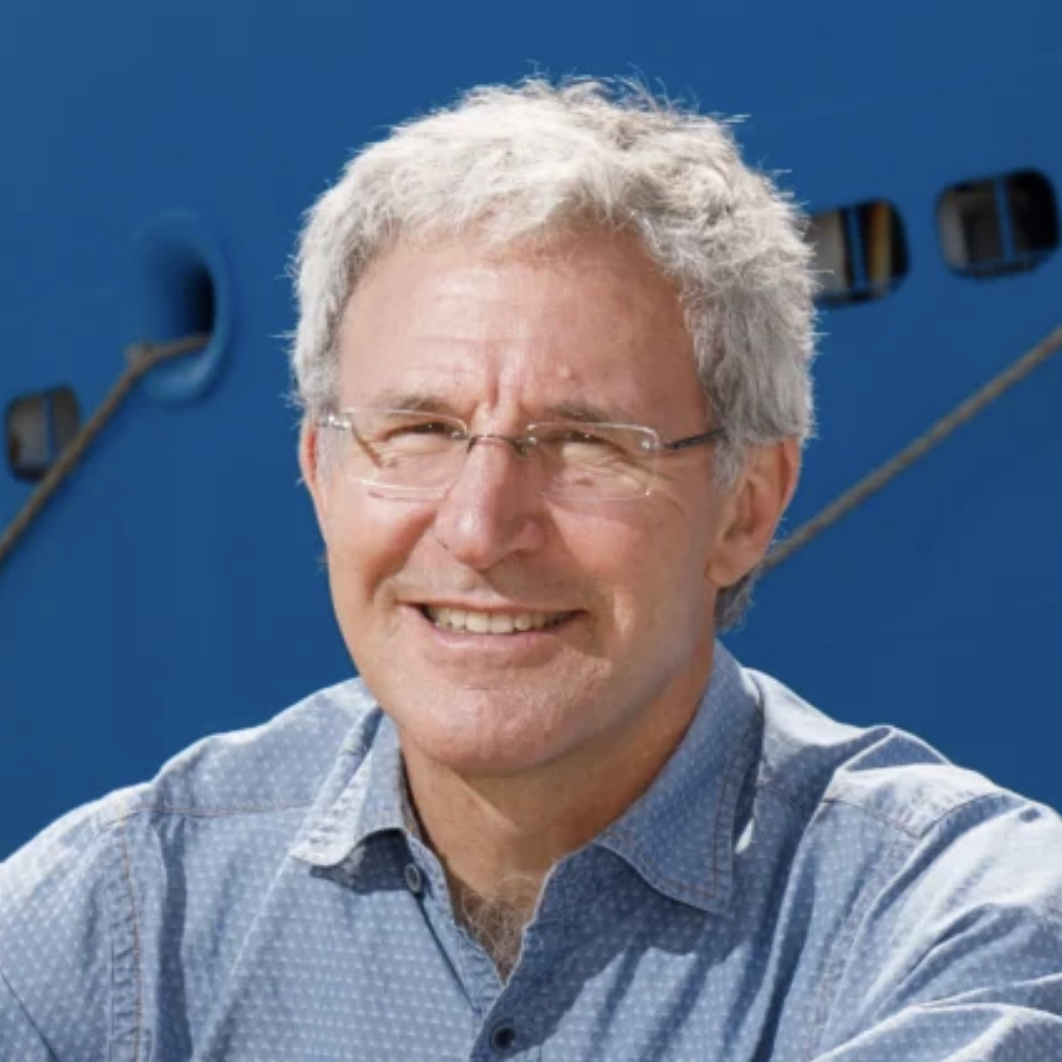
Current AAPP Activities:
I carry out Southern Ocean observations, including repeat hydrography and process studies from ships, Argo and Deep Argo floats, moorings in the Antarctic Circumpolar Current and on the Antarctic continental shelf, and satellite data. I work with colleagues and students on analysis of numerical simulations used to investigate Southern Ocean dynamics and atmosphere-ocean-cryosphere interactions.
Current AAPP Activities:
I carry out Southern Ocean observations, including repeat hydrography and process studies from ships, Argo and Deep Argo floats, moorings in the Antarctic Circumpolar Current and on the Antarctic continental shelf, and satellite data. I work with colleagues and students on analysis of numerical simulations used to investigate Southern Ocean dynamics and atmosphere-ocean-cryosphere interactions.
Biography
Dr Stephen Rintoul is a physical oceanographer with a long-standing interest in the Southern Ocean and its role in the earth system. His research has contributed to a deeper appreciation of the influence of the Southern Ocean on regional and global climate, biogeochemical cycles and biological productivity. Born in the USA, he did his graduate studies at the MIT-WHOI Joint Program and postdoctoral work at Princeton before moving to Australia to take up a position at the CSIRO. His scientific interests include the dynamics of the Antarctic Circumpolar Current, the Southern Ocean overturning circulation, water mass formation, and the influence of Southern Ocean currents on biology and biogeochemistry. Primarily an observational oceanographer, he has led 15 expeditions to the Southern, Indian and Pacific Oceans. Over the past 30 years, Dr Rintoul has co-chaired international panels responsible for major climate research programs carried out in the Southern Ocean. He led the Climate of Antarctica and the Southern Ocean program of the International Polar Year and led the development of the Southern Ocean Observing System. He was a Coordinating Lead Author of the Oceans chapter in the 5th Assessment Report of the Intergovernmental Panel on Climate Change (IPCC). His scientific achievements have been recognised by many national and international awards.
Scientific Committee Memberships
| International Science Panel, New Zealand Antarctic Research Institute |
Awards / Grants
| 2019 Tasmanian Premier’s STEM Research of the Year |
| 2012 Australian Antarctic Medal |
| 2012 Martha T Muse Prize for Science and Policy in Antarctica |
| 2010 W. S. Jardetzky Medal & Lecture, Lamont-Doherty Earth Observatory, USA |
| 2005 Georg Wüst Prize, German Society for Marine Research |
Selected Publications
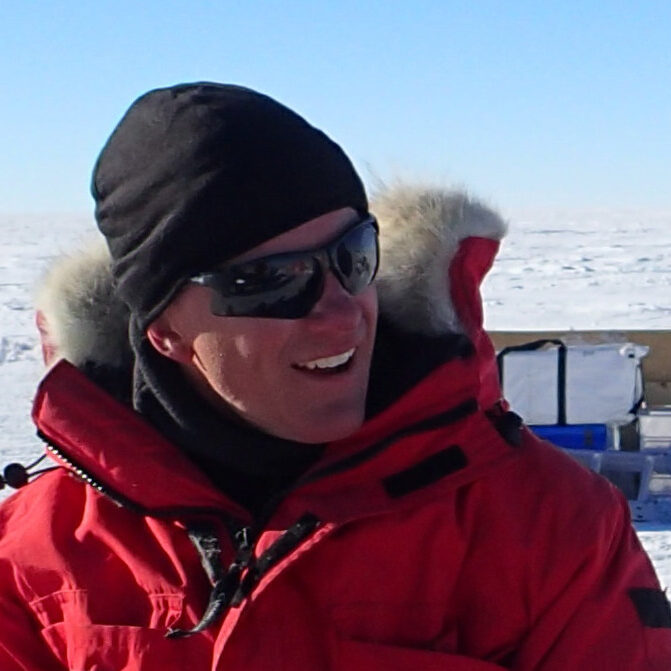
About Jason & AAPP Involvement:
My research uses ice core climate records to study and reconstruct both Antarctic and Australian climate. The annual amount of snowfall and the concentration of impurities (such as sea-salts) contained within the ice have been used to reconstruct snowfall across all of Antarctica, rainfall in both South West Western Australia and Eastern Australia and large scale climate modes such as the Interdecadial Pacific Oscillation.
About Jason & AAPP Involvement:
My research uses ice core climate records to study and reconstruct both Antarctic and Australian climate. The annual amount of snowfall and the concentration of impurities (such as sea-salts) contained within the ice have been used to reconstruct snowfall across all of Antarctica, rainfall in both South West Western Australia and Eastern Australia and large scale climate modes such as the Interdecadial Pacific Oscillation.
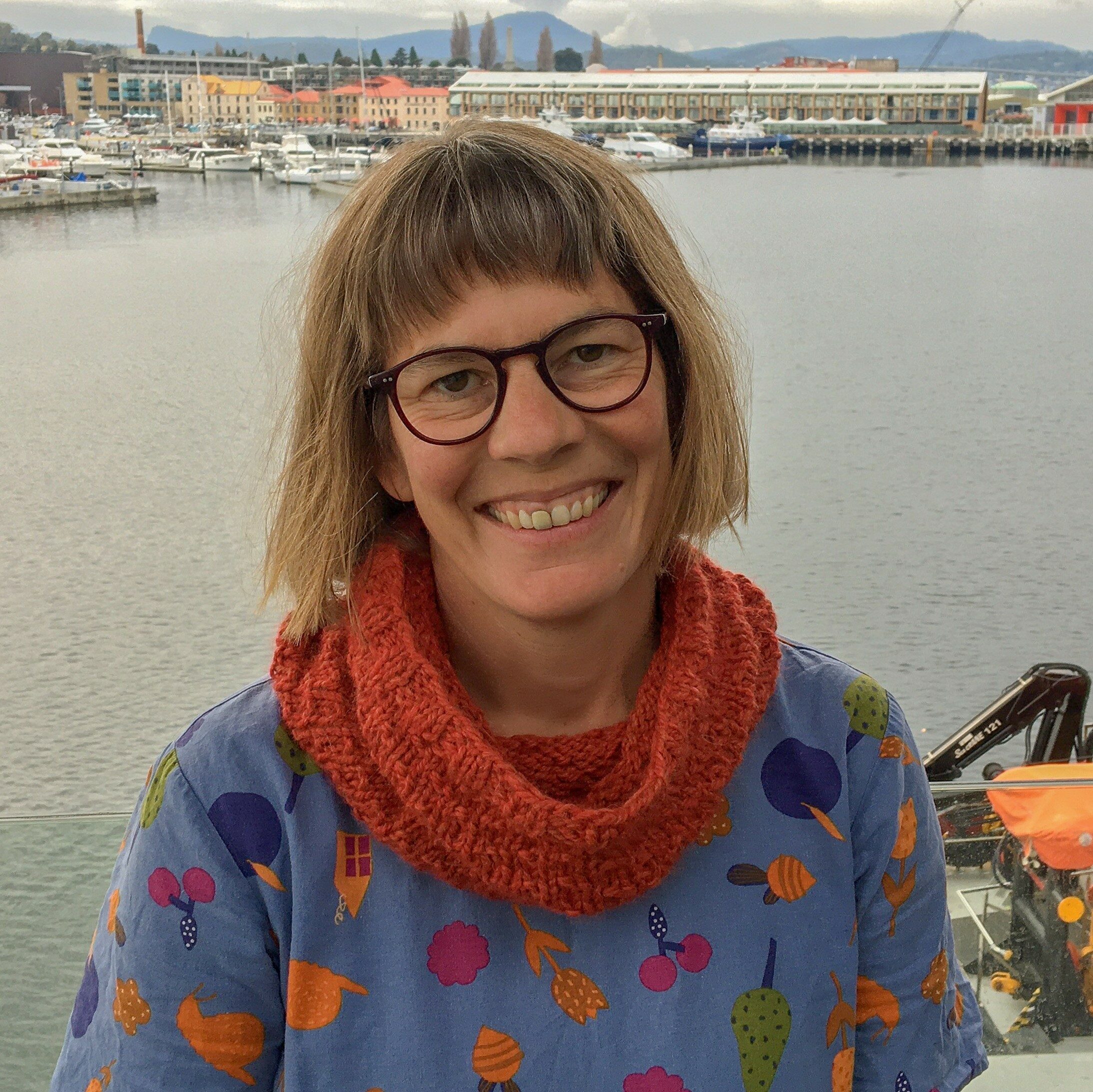
About Christina & AAPP involvement:
Working as a biogeochemist with a strong interest in phytoplankton and their adaptations to polar environments, Dr. Schallenberg’s research activities stretch across three AAPP projects (P5: Biogeochemistry, P6: Sea ice, P7: Krill and ecosystems). She is an expert on Biogeochemical (BGC)-Argo float measurements and conducts her own research using float data, with a recent emphasis on under-ice data. She is also contributing to research into polynya-associated primary productivity, co-supervising PhD-student Leo Rolland and advising post-doctoral research fellow Jake Weis.
About Christina & AAPP involvement:
Working as a biogeochemist with a strong interest in phytoplankton and their adaptations to polar environments, Dr. Schallenberg’s research activities stretch across three AAPP projects (P5: Biogeochemistry, P6: Sea ice, P7: Krill and ecosystems). She is an expert on Biogeochemical (BGC)-Argo float measurements and conducts her own research using float data, with a recent emphasis on under-ice data. She is also contributing to research into polynya-associated primary productivity, co-supervising PhD-student Leo Rolland and advising post-doctoral research fellow Jake Weis.
Biography
Originally from Germany, Dr. Schallenberg finished her MSc in Oceanography at Dalhousie University in Halifax, Canada, in 2003. Her MSc work focussed on optical methods in biological oceanography, utilizing drifter data from the Bering Sea. She then proceeded to live in Canada, working as a science journalist and editor before returning to graduate school at the University of Victoria, Canada, and finishing her PhD in 2015. After a 3-month sailing stint to celebrate submission of her thesis, she started work as a post-doc at the University of Tasmania. Christina worked as a research fellow at UTas for 7 years, investigating the use of remotely sensed phytoplankton fluorescence as an indicator of the physiological status of phytoplankton, particularly with respect to iron limitation. Since 2019 she has been part of the Biogeochemical (BGC) Argo Team at UTas/CSIRO. She now co-leads the IMOS BGC-Argo sub-facility together with Prof Pete Strutton.
Scientific Committee Memberships
Oceanography Society
Awards / Grants
COSE Outreach Award for organizing the Beer Aquatic speaker series (together with Will Hobbs)
Partner investigator on ARC award # DP2301010368: Using animal-borne sensors to unravel East Antarctic coastal productivity
Partner investigator on ARC award # DP230100505: Understanding multi-scale dynamics of eddies in the East Australian Current
Selected Publications (top 5)
Biogeochemical-Argo floats show that chlorophyll increases before carbon in the high-latitude Southern Ocean spring bloom
One-third of Southern Ocean productivity is supported by dust deposition
Widespread phytoplankton blooms triggered by 2019–2020 Australian wildfires
Diel quenching of Southern Ocean phytoplankton fluorescence is related to iron limitation
Iron Limitation Drives the Globally Extreme Fluorescence/Chlorophyll Ratios of the Southern Ocean
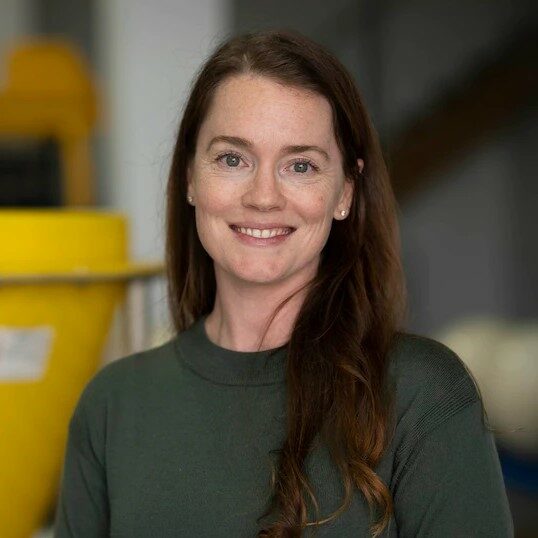
ELIZABETH SHADWICK
Marine biogeochemist
Co-leader Project 5: Biogeochemistry
About Elizabeth & AAPP Involvement:
Elizabeth is a marine biogeochemist interested in distinguishing between natural and anthropogenic variability in the ocean. She is particularly interested in the carbon cycle and ocean acidification. Her research relies on conventional ship board sampling as well as autonomous platforms and biogeochemical models. Elizabeth is the Co-Leader of the IMOS Southern Ocean Time Series (SOTS) Facility and maintains a moored observatory on the continental shelf of the West Antarctic Peninsula. Elizabeth has an ongoing interest in monitoring the changing biogeochemistry of the East Antarctic Coastal region.
About Elizabeth & AAPP Involvement:
Elizabeth is a marine biogeochemist interested in distinguishing between natural and anthropogenic variability in the ocean. She is particularly interested in the carbon cycle and ocean acidification. Her research relies on conventional ship board sampling as well as autonomous platforms and biogeochemical models. Elizabeth is the Co-Leader of the IMOS Southern Ocean Time Series (SOTS) Facility and maintains a moored observatory on the continental shelf of the West Antarctic Peninsula. Elizabeth has an ongoing interest in monitoring the changing biogeochemistry of the East Antarctic Coastal region.

About Jodie & AAPP Involvement:
Jodie's research involves mapping and understanding the physical seafloor environment around the Antarctic margin, including bathymetry, geomorphic features, sediment characteristics, seafloor habitats and benthic communities. Her work spans from the shallow coastal waters to the continental shelf and slope and into the deep ocean.
In the AAPP, Jodie will provide fundamental seafloor information to better understand ocean-ice interactions and marine ecosystems. This includes:
- Identifying pathways of ocean circulation
- Revealing patterns of ice sheet advance and retreat
- Determining the distribution of iceberg grounding and their effect on regional ice dynamics
- Compiling baseline data on marine ecosystems for monitoring and assessing future change
- Identifying physical drivers controlling the distribution of biological communities
- Predicting the impacts of changing ice dynamics on benthic communities.
About Jodie & AAPP Involvement:
Jodie's research involves mapping and understanding the physical seafloor environment around the Antarctic margin, including bathymetry, geomorphic features, sediment characteristics, seafloor habitats and benthic communities. Her work spans from the shallow coastal waters to the continental shelf and slope and into the deep ocean.
In the AAPP, Jodie will provide fundamental seafloor information to better understand ocean-ice interactions and marine ecosystems. This includes:
- Identifying pathways of ocean circulation
- Revealing patterns of ice sheet advance and retreat
- Determining the distribution of iceberg grounding and their effect on regional ice dynamics
- Compiling baseline data on marine ecosystems for monitoring and assessing future change
- Identifying physical drivers controlling the distribution of biological communities
- Predicting the impacts of changing ice dynamics on benthic communities.
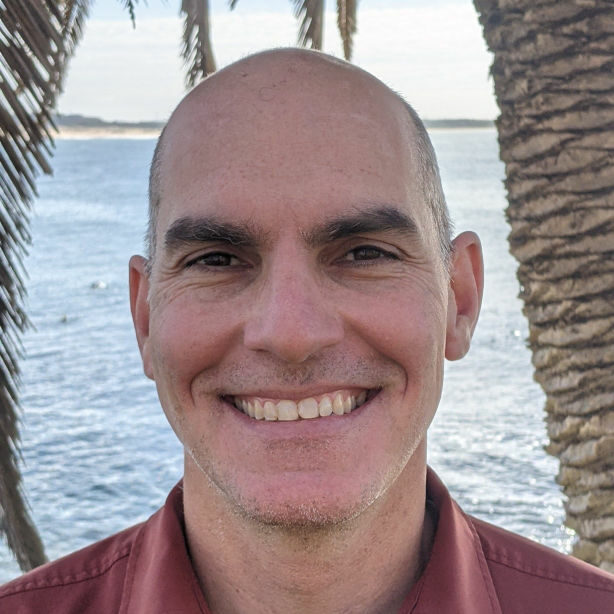
About Paul & AAPP Involvement:
The central theme of research by Dr Paul Spence is geophysical fluid dynamics with a focus on the ocean’s role in global climate. He is especially interested in dynamics of the Southern Ocean and Antarctic margins, and is employed at the Institute of Marine and Antarctic Studies, University of Tasmania.
About Paul & AAPP Involvement:
The central theme of research by Dr Paul Spence is geophysical fluid dynamics with a focus on the ocean’s role in global climate. He is especially interested in dynamics of the Southern Ocean and Antarctic margins, and is employed at the Institute of Marine and Antarctic Studies, University of Tasmania.
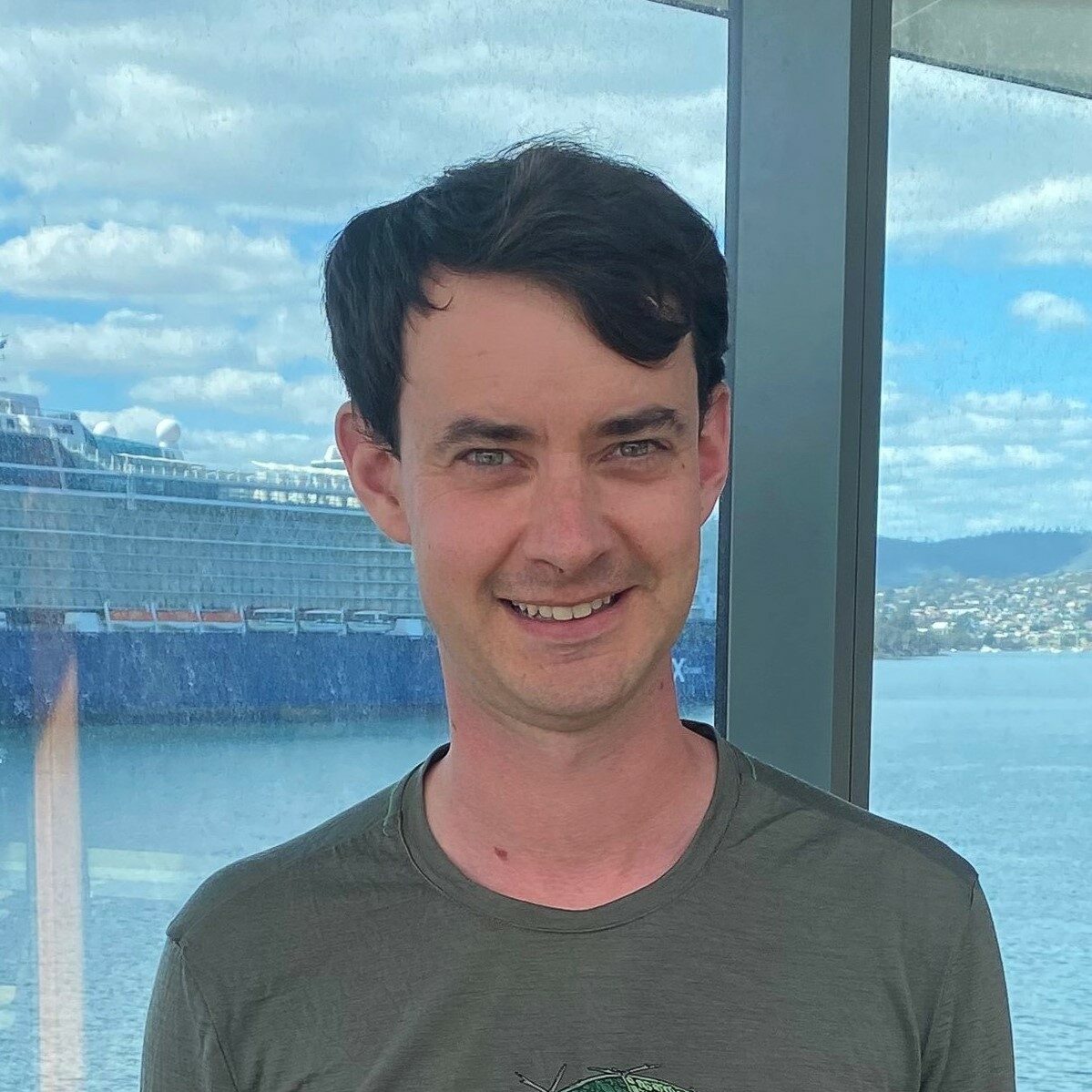
About Anton & AAPP Involvement:
Anton Steketee is a data analyst with a background in climate science. His research examines climate variability, and how this is impacted by global climate modes and anthropogenic climate change. Through AAPP he uses and develops open source software to display historical variability of the climate in the Antarctic sea ice zone. Anton is the co-author of Nilas, a mapping tool for displaying Southern Ocean climate data.
About Anton & AAPP Involvement:
Anton Steketee is a data analyst with a background in climate science. His research examines climate variability, and how this is impacted by global climate modes and anthropogenic climate change. Through AAPP he uses and develops open source software to display historical variability of the climate in the Antarctic sea ice zone. Anton is the co-author of Nilas, a mapping tool for displaying Southern Ocean climate data.

About Kerrie and AAPP Involvement:
Kerrie’s research field is the ecology of pelagic invertebrates, with over 30 years’ experience working in Southern Ocean and temperate marine ecosystems. She has contributed to significant advances in understanding the roles that pelagic invertebrates play in sea ice ecosystems, and to evaluating future climate-related impacts.
Current AAPP Activities:
Kerrie’s research field is the ecology of pelagic invertebrates, with over 30 years’ experience working in Southern Ocean and temperate marine ecosystems. She has contributed to significant advances in understanding the roles that pelagic invertebrates play in sea ice ecosystems, and to evaluating future climate-related impacts.
Biography
My current research that provides the framework for the zooplankton team at AAPP is understanding the functional dynamics of zooplankton in the Southern Ocean, particularly the role of alternative food webs. The best-understood species, Antarctic krill Euphausia superba, occupies a central position in the Southern Ocean ecosystem and is the subject of a fishery. We are examining key phases of its life cycle using the Krill Aquarium at the AAD to measure the effects of increasing CO2 on reproductive output and development of larvae.
Krill's large biomass has resulted in considerable research efforts over many years. However, there are other energy pathways in which krill are not central but instead flow through zooplankton. Alternative pathways could include organisms such as copepods, gelatinous groups and small fish. A fundamental shift in zooplankton communities might already have occurred in the Southern Ocean, whereby krill have declined over the past 30 years, and gelatinous pelagic sea-squirts (salps) have correspondingly increased, as a response to reduced sea ice cover. In my research team we are addressing the role of zooplankton including pteropods, copepods and other euphausiids in the Southern Ocean ecosystem that link primary producers with higher trophic levels.
Scientific committee memberships
| IMOS Sub-facility Leader: Southern Ocean – Continuous Plankton Recorder |
| Editorial Board: Polar Biology |
| Editorial Board: Polar Science |
Significant awards and grants
| ARC Discovery: Zooplankton and ocean productivity in a changing climate |
| Invited Professor, National Institute of Polar Research, Japan |
| Professor Invitée, Sorbonne Universités, Muséum national d’histoire naturelle, Paris, France |
| Whitley Award for Best CD-ROM and electronic guide: Marine Zooplankton of SE Australia |
Selected publications
| Swadling, K.M.,Constable, A.J., Fraser, A.D., Massom, R.A., Borup, M.D., Ghigliotti, L., Granata, A.,Guglielmo, L., Kawaguchi, S., Kennedy, F., Kiko, R., Koubbi, P., Makabe, R., Martin, A., McMinn, A., Moteki, M., Pakhomov, E.A., Peeken, I., Reimer, J., Reid, P., Ryan, K., Vacchi, M., Virtue, P., Weldrick, C.K., Wongpan, P., Wotherspoon, S.J. (2022) Biological responses to change in Antarctic sea ice habitats. Front. Ecol. Evol. 10:1073823. doi: 10.3389/fevo.2022.1073823 |
| Johnston NM, Murphy EJ, Atkinson A, Constable AJ, Cotté C, Cox M, Daly KL, Driscoll R, Flores H, Halfter S, Henschke N, Hill SL, Höfer J, Hunt BPV, Kawaguchi S, Lindsay D, Liszka C, Loeb V, Manno C, Meyer B, Pakhomov EA, Pinkerton MH, Reiss CS, Richerson K, Smith WO Jr, Steinberg DK, Swadling KM, Tarling GA, Thorpe SE, Veytia D, Ward P, Weldrick CK and Yang G (2022) Status, Change, and Futures of Zooplankton in the Southern Ocean. Front. Ecol. Evol. 9:624692. doi: 10.3389/fevo.2021.624692 |
| Subramaniam, RC, Corney, SP, Melbourne-Thomas, J, Peron, C, Ziegler, P and Swadling, KM (2022) Spatially explicit food web modelling to consider fisheries impacts and ecosystem representation within Marine Protected Areas on the Kerguelen Plateau”, ICES Journal of Marine Science, 79 (4) pp. 1327-1339. |
| Hunt, BPV and Swadling, KM (2021) Macrozooplankton and micronekton community structure and diel vertical migration in the Heard Island Region, Central Kerguelen Plateau. Journal of Marine Systems, 221 |
| Constable, AJ and Swadling, KM (Guest Editors) (2020) Ecosystem drivers of food webs on the Kerguelen Axis of the Southern Ocean. Special Issue of Deep Sea Research |
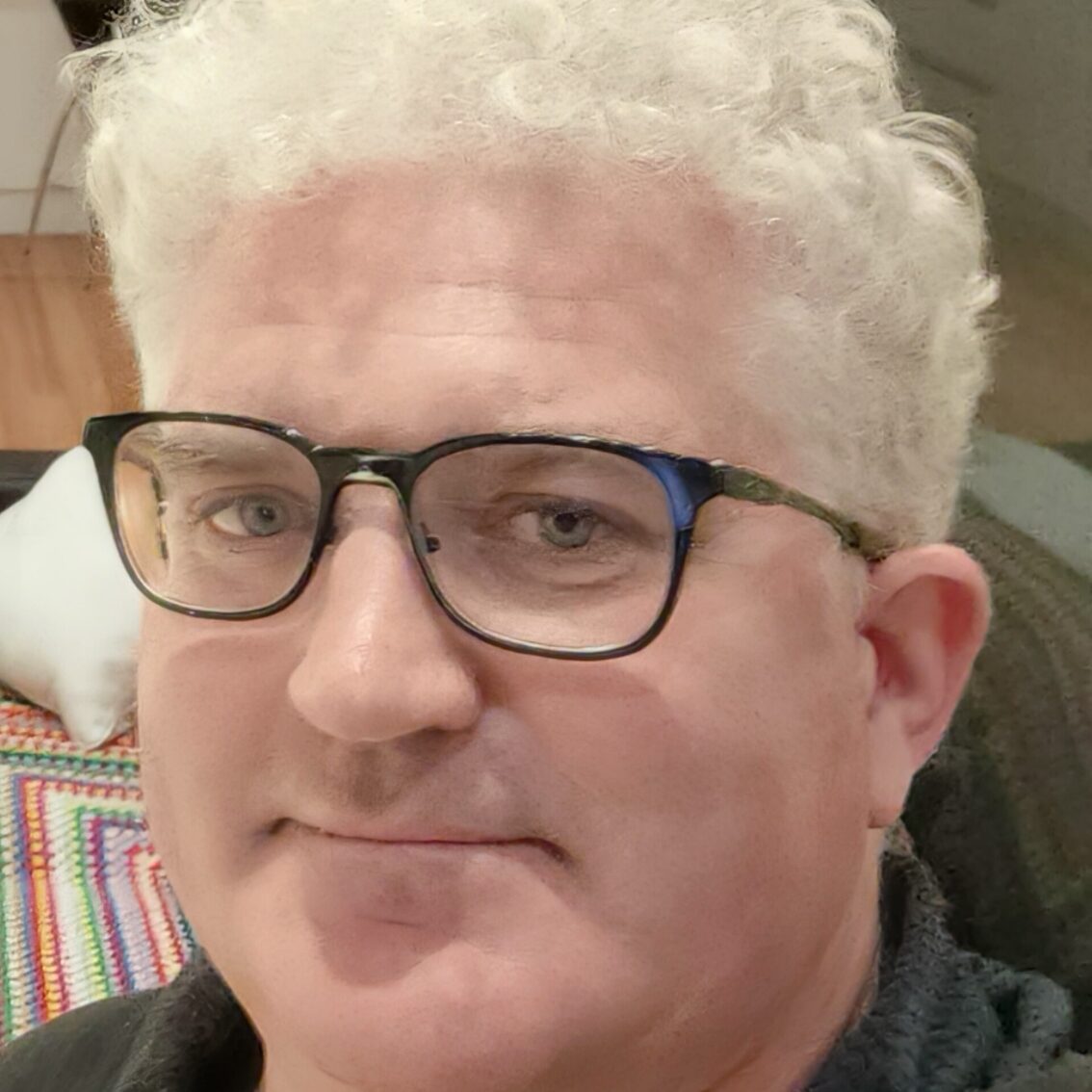
About Michael & AAPP Involvement:
Michael is an expert geospatial programmer with over 10 years of experience in high level Southern Ocean ecosystem research at the Australian Antarctic Division (AAD). His multifaceted role there as a Research Software Engineer started in the Southern Ocean Ecosystems program and is now consolidated as a cloud-computing and data stream accessibility expert in the Integrated Digital East Antarctica program (IDEA).
"My expertise in problem solving with a wide variety of data types and formats is well recognized, researchers continually turn to me for assistance and I have a broad influence in cross-program and cross-language work. I designed and built our platform raadtools on the Nectar Research Cloud consisting of easy to use functions for a wide collection of data, and which is being re-imagined on cross-language and platform-agnostic basis within the IDEA."
About Michael & AAPP Involvement:
Michael writes software for accessing environmental data and integrating it with ecosystem models, a conduit for modelling approaches in “Links to sea ice and BGC”.

Current AAPP Activities:
Dr Bronte Tilbrook works with AAPP to resolve ocean carbon uptake and variability and ocean acidification. He co-chairs the Global Ocean Acidification Observing Network (GOA-ON), which involves researchers from 100 countries in monitoring ocean acidification and the impacts on marine life.
Current AAPP Activities:
Resolving ocean carbon uptake and variability and ocean acidification.
Biography
Dr. Bronte Tilbrook is a biogeochemist based in Hobart, Australia, with CSIRO Oceans and Atmosphere and the Australian Antarctic Partnership Program. He graduated in 1992 with a PhD in chemical oceanography from the University of Hawaii.
Tilbrook leads projects that have established Australia's ocean observing system for the detection of ocean acidification and carbon dioxide uptake and storage, with the research extending from the tropics to the Antarctic shelf. He co-chairs the Global Ocean Acidification Observing Network (GOA-ON), which involves researchers from 100 countries in monitoring ocean acidification and the impacts on marine life. Major efforts within GOA-ON include data exchange, capacity building, mentoring early career and developing country researchers, and building collaborative regional networks. Since 2016 he has been a co-focal point for the Community of Ocean Action for Sustainable Development Goal 14.3 on ocean acidity, a role organised through the Intergovernmental Oceanographic Commission and the Department of Economic and Social Affairs of the United Nations.
Tilbrook is also involved in a number of international programs and working groups on sustained observing to determine trends and changing environmental conditions in the oceans. He is a frequent participant in major conferences and in 2021 is co-chair of the 5th International Symposium on the Oceans in a High CO2 World, Lima, Peru. He has 10730 citations for 90 publications (ISI Web of Science core collection).
Scientific Committee Memberships
| Global Ocean Acidification Observing Network, co-chair |
| Community of Ocean Acidification, focal point |
| IAPSO working group on pH best practices, member |
| Mutistressor working group for the Intergovernmental Oceanographic Commission, member |
| Surface Ocean Carbon Atlas, co-lead for Southern Ocean |
| Global Ocean Data Analysis Project Reference Group, member |
Selected Publications
Associated links
Global Ocean Acidification Observing Network
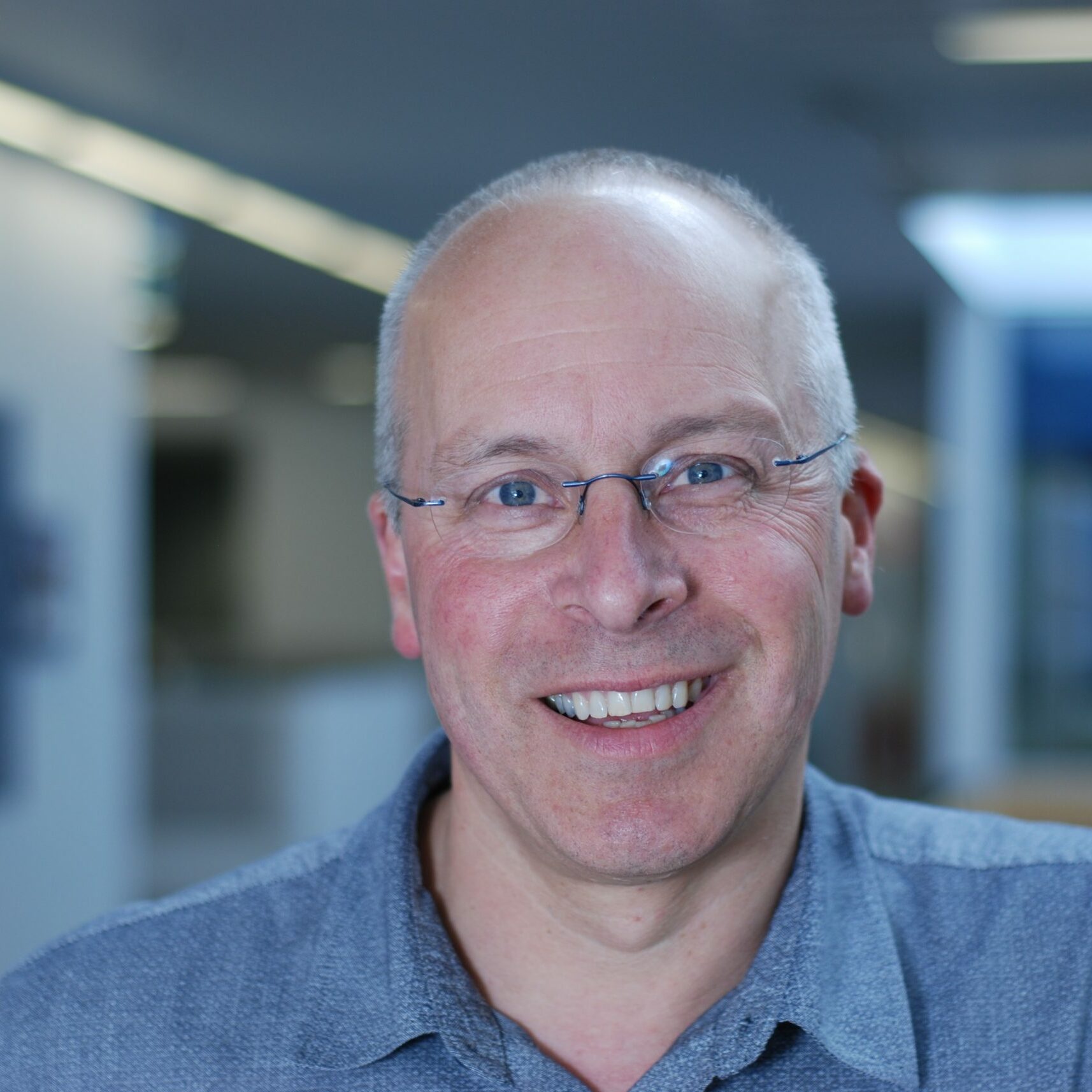
About Tas & AAPP Involvement:
Tas is a glaciologist from the Australian Antarctic Division working within the AAPP Theme 1, contributing to ice core and ice shelf projects. Tas leads the Antarctic Climate Program at the AAD.
About Tas & AAPP Involvement:
Tas is a glaciologist from the Australian Antarctic Division working within the AAPP Theme 1, contributing to ice core and ice shelf projects. Tas leads the Antarctic Climate Program at the AAD.
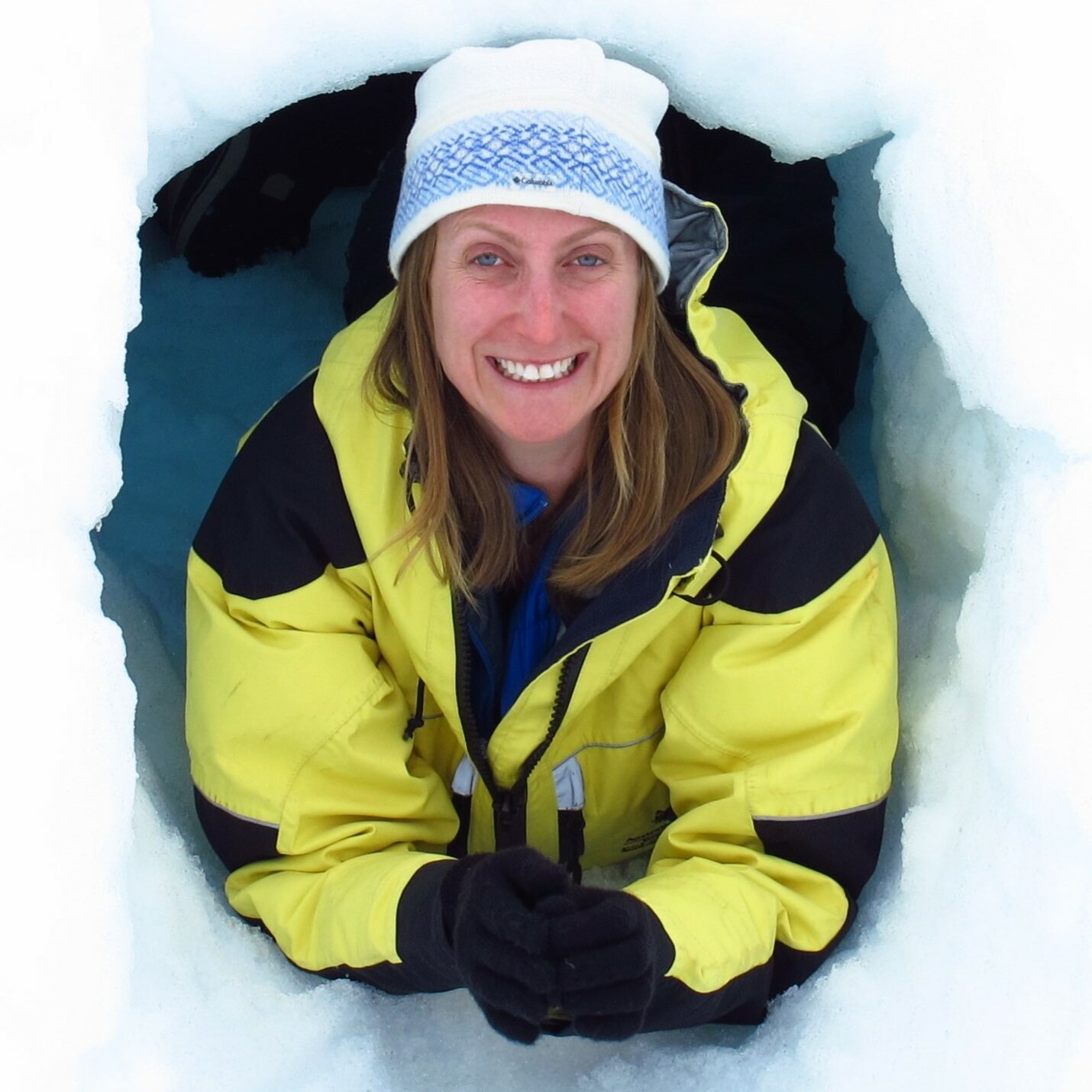
About Esmee & AAPP Involvement:
Esmee is a Senior Scientist at CSIRO Oceans & Atmosphere. She contributes to the Australian Antarctic Program Partnership through research into circulation and water mass changes in the Southern Ocean, polynya dynamics and ocean-ice interactions at the Antarctic margins. Esmee research also uses under-ice Argo floats to gain novel insights into Antarctic continental shelf processes and to expand observations into the seasonal ice zone. Esmee has participated in 15 research voyages to tropical and temperate waters and to the Southern Ocean and Antarctica.
About Esmee & AAPP Involvement:
Esmee is a Senior Scientist at CSIRO Oceans & Atmosphere. She contributes to the Australian Antarctic Program Partnership through research into circulation and water mass changes in the Southern Ocean, polynya dynamics and ocean-ice interactions at the Antarctic margins. Esmee research also uses under-ice Argo floats to gain novel insights into Antarctic continental shelf processes and to expand observations into the seasonal ice zone. Esmee has participated in 15 research voyages to tropical and temperate waters and to the Southern Ocean and Antarctica.
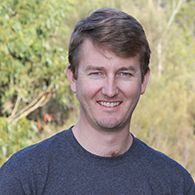
About Christopher & AAPP Involvement:
Dr Christopher Watson is a geodesist at the University of Tasmania, studying the changing size, shape and gravity field of Earth.
About Christopher & AAPP Involvement:
Dr Christopher Watson is a geodesist at the University of Tasmania, studying the changing size, shape and gravity field of Earth.

About Karen & AAPP Involvement:
Karen is a marine microbial ecologist at the Australian Antarctic Division, within the Southern Ocean Ecosystem Program. She has experience both as a principal investigator and project manager on marine science voyages, with research focussing on the marine microbial loop.
Her main interest in relation to AAPP is to better understand phytoplankton dynamics and how this influences higher trophic levels and biological carbon flux in the Southern Ocean. This research contributes primarily to Theme 3 “The future of sea-ice krill and ecosystems”, Project 7 “Krill and Ecosystems”, as well as to Theme 2 “Nature and impacts of Southern Ocean change”, Project 5 “Biogeochemistry”.
About Karen & AAPP Involvement:
Karen is a marine microbial ecologist at the Australian Antarctic Division, within the Southern Ocean Ecosystem Program. She has experience both as a principal investigator and project manager on marine science voyages, with research focussing on the marine microbial loop.
Her main interest in relation to AAPP is to better understand phytoplankton dynamics and how this influences higher trophic levels and biological carbon flux in the Southern Ocean. This research contributes primarily to Theme 3 “The future of sea-ice krill and ecosystems”, Project 7 “Krill and Ecosystems”, as well as to Theme 2 “Nature and impacts of Southern Ocean change”, Project 5 “Biogeochemistry”.

About Matt & AAPP Involvement:
Matt is contributing to Project 1 (Atmosphere), which aims to reduce the Southern Ocean radiation bias in atmospheric models. He principally uses the ACCESS model and the GLOMAP aerosol scheme, but also has interests in earth system connections and their representation in models.
About Matt & AAPP Involvement:
Matt is contributing to Project 1 (Atmosphere), which aims to reduce the Southern Ocean radiation bias in atmospheric models. He principally uses the ACCESS model and the GLOMAP aerosol scheme, but also has interests in earth system connections and their representation in models.
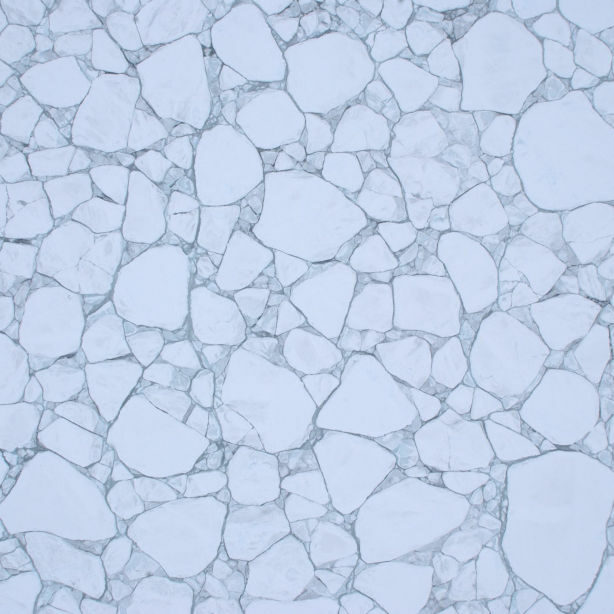
PHILIPPE ZIEGLER
Population dynamics scientist
About Philippe & AAPP Involvement:
Philippe is a Principal Research Scientist at the Australian Antarctic Division and responsible for the science to support the management of Australia's Southern Ocean fisheries, including the toothfish and icefish fisheries at Heard Island and McDonald Islands and exploratory toothfish fisheries in the area of the Convention for the Conservation of Antarctic Marine Living Resources (CCAMLR). Philippe's involvement in AAPP is through Project 7 (Krill and Ecosystems) as a population dynamics scientist.
About Philippe & AAPP Involvement:
Philippe is a Principal Research Scientist at the Australian Antarctic Division and responsible for the science to support the management of Australia's Southern Ocean fisheries, including the toothfish and icefish fisheries at Heard Island and McDonald Islands and exploratory toothfish fisheries in the area of the Convention for the Conservation of Antarctic Marine Living Resources (CCAMLR). Philippe's involvement in AAPP is through Project 7 (Krill and Ecosystems) as a population dynamics scientist.



